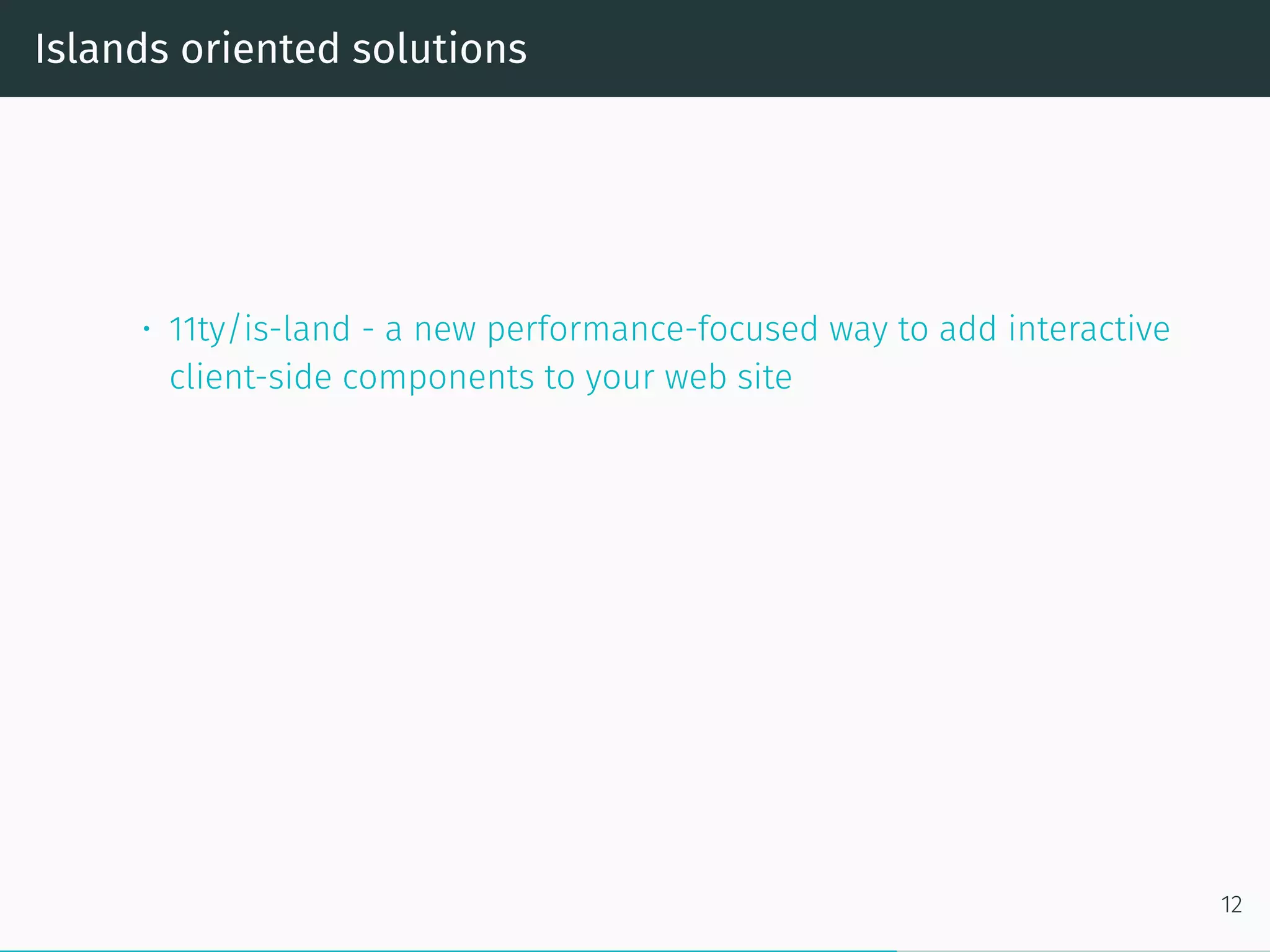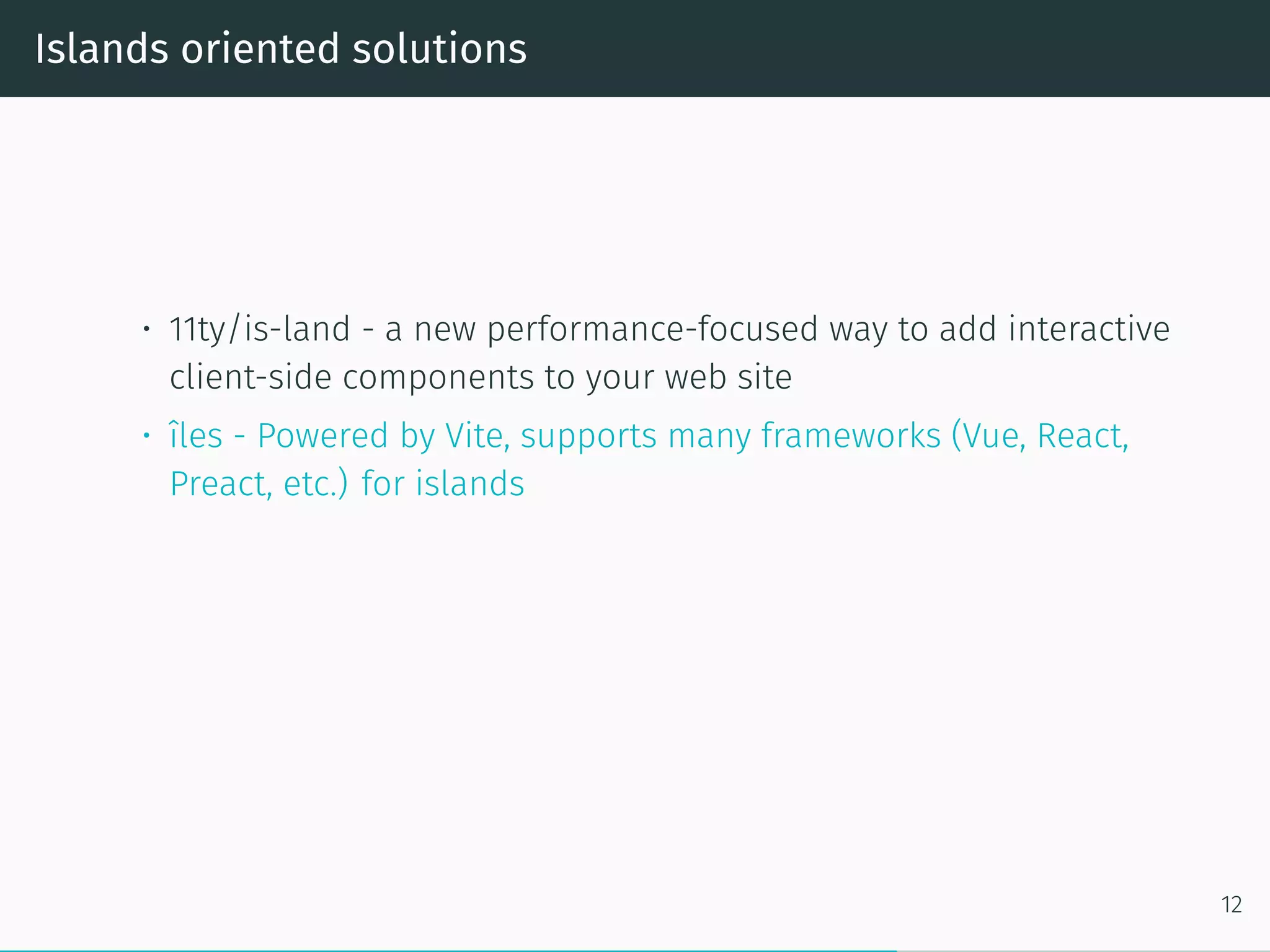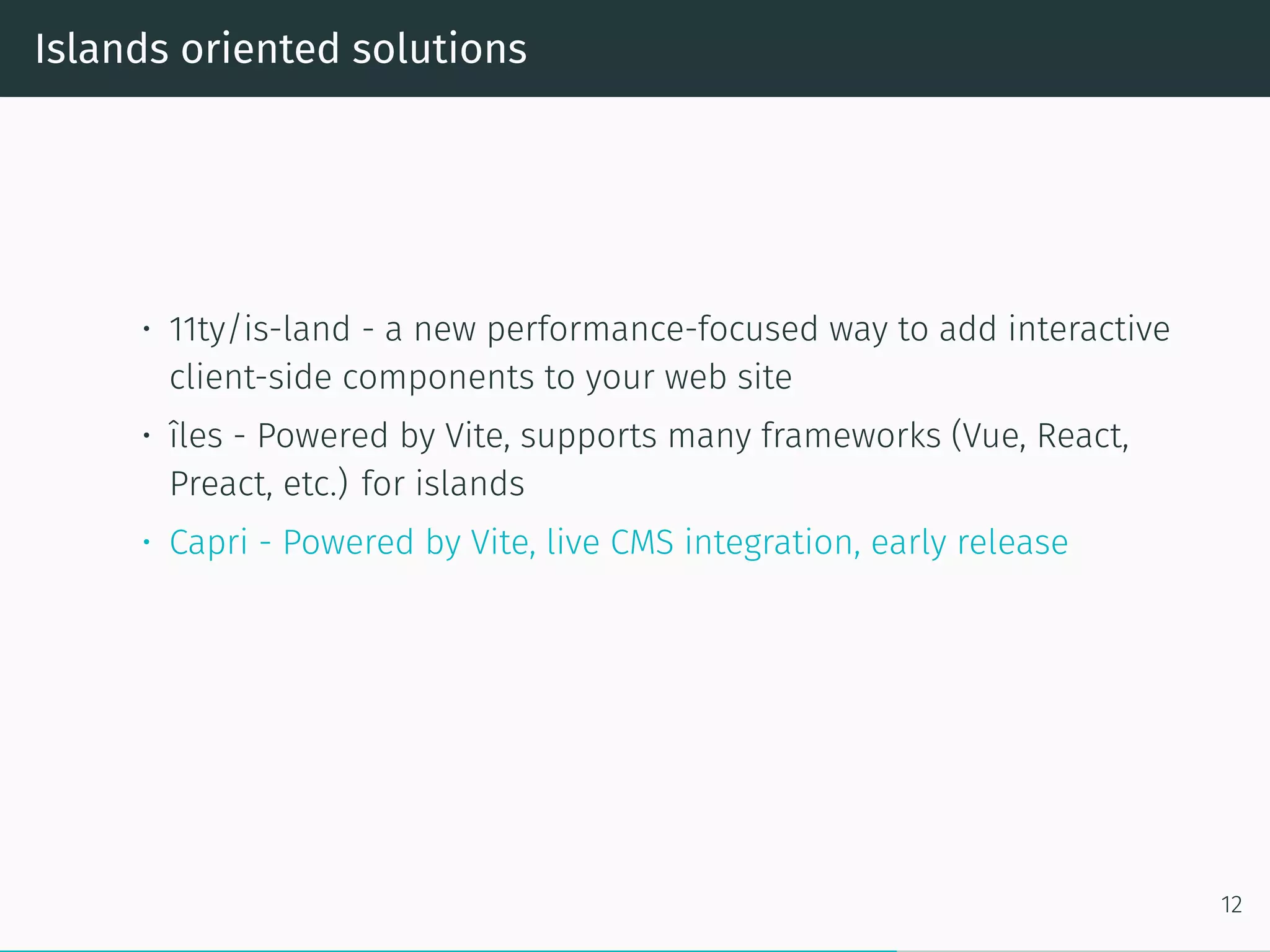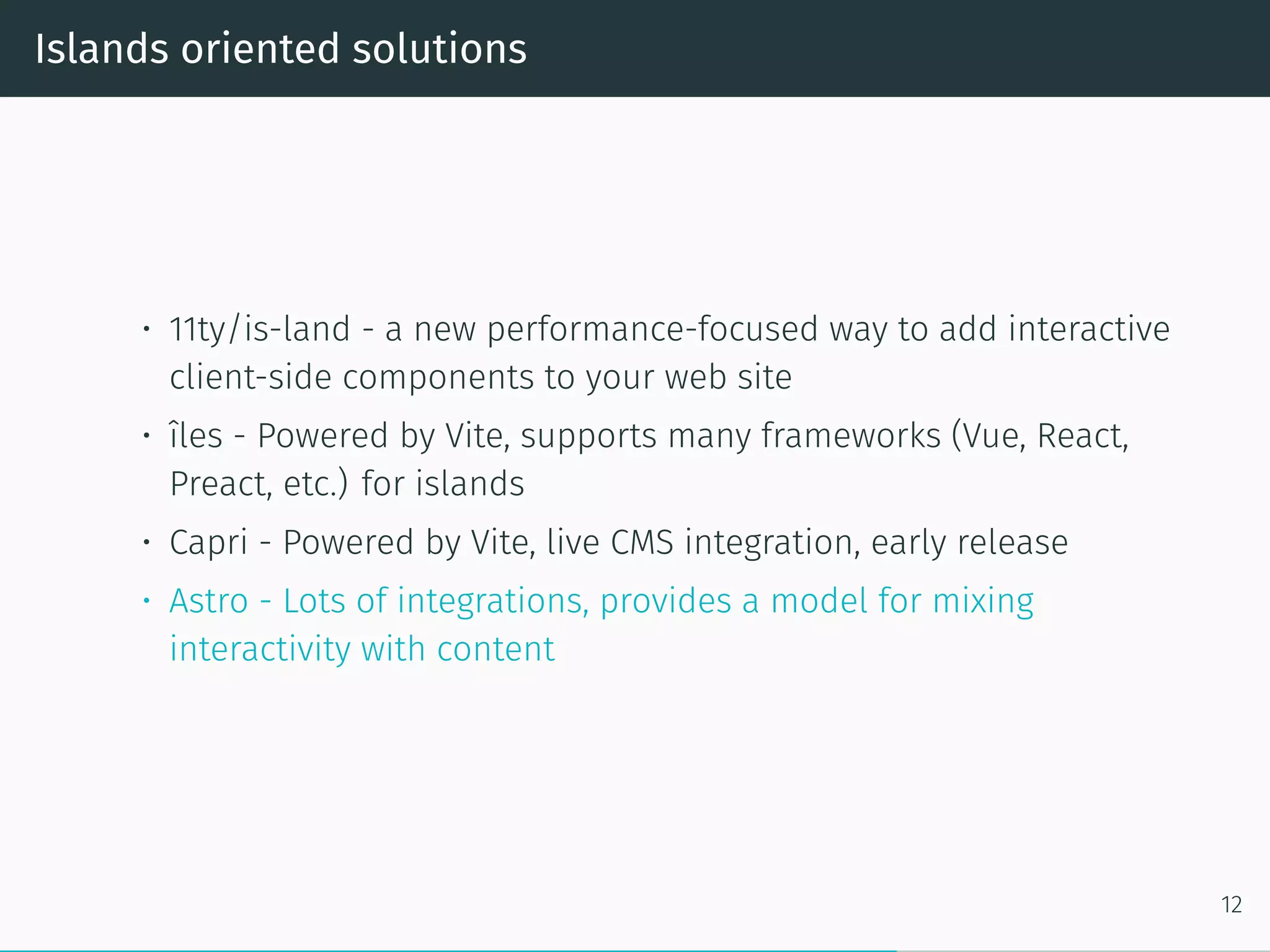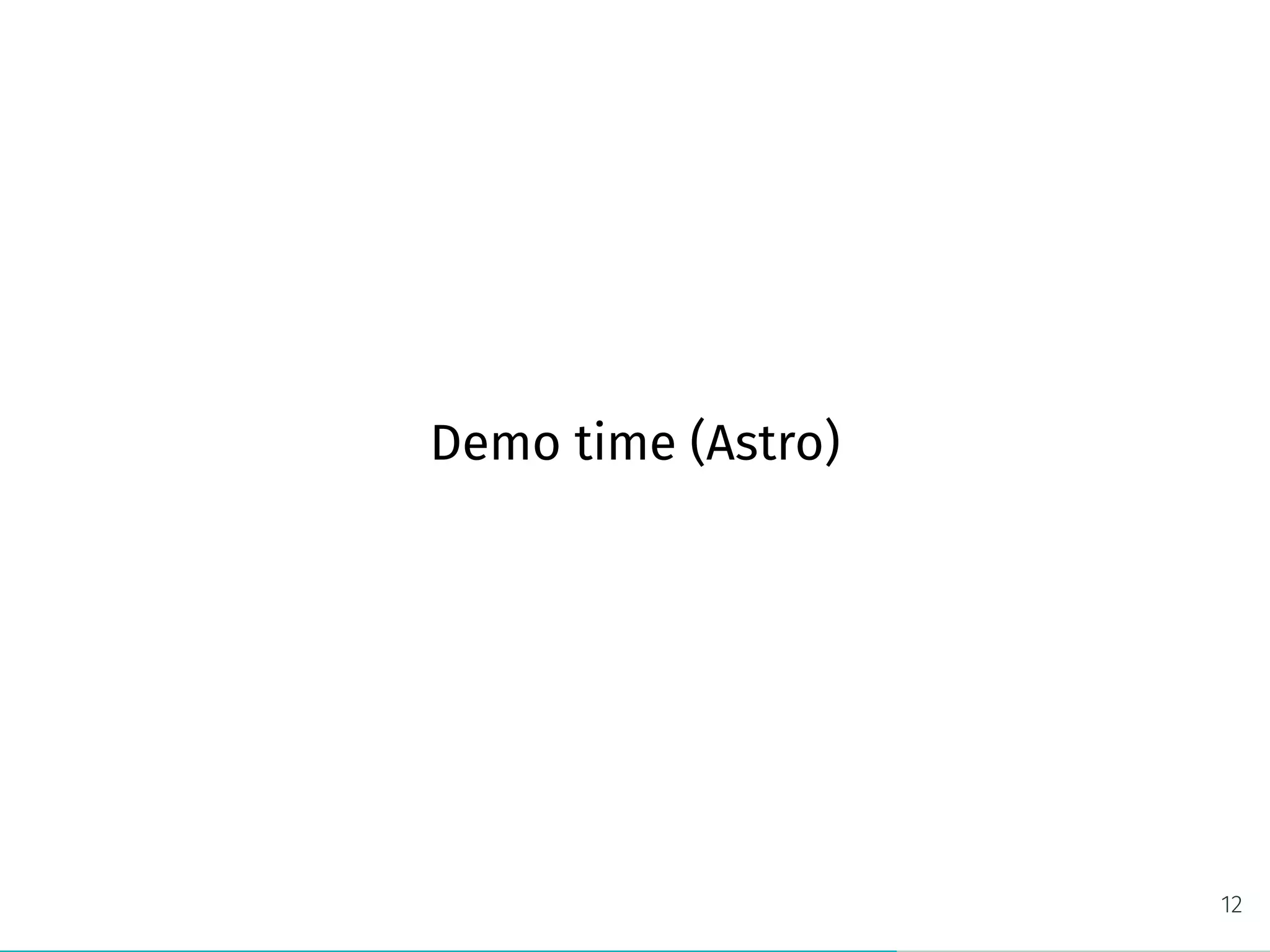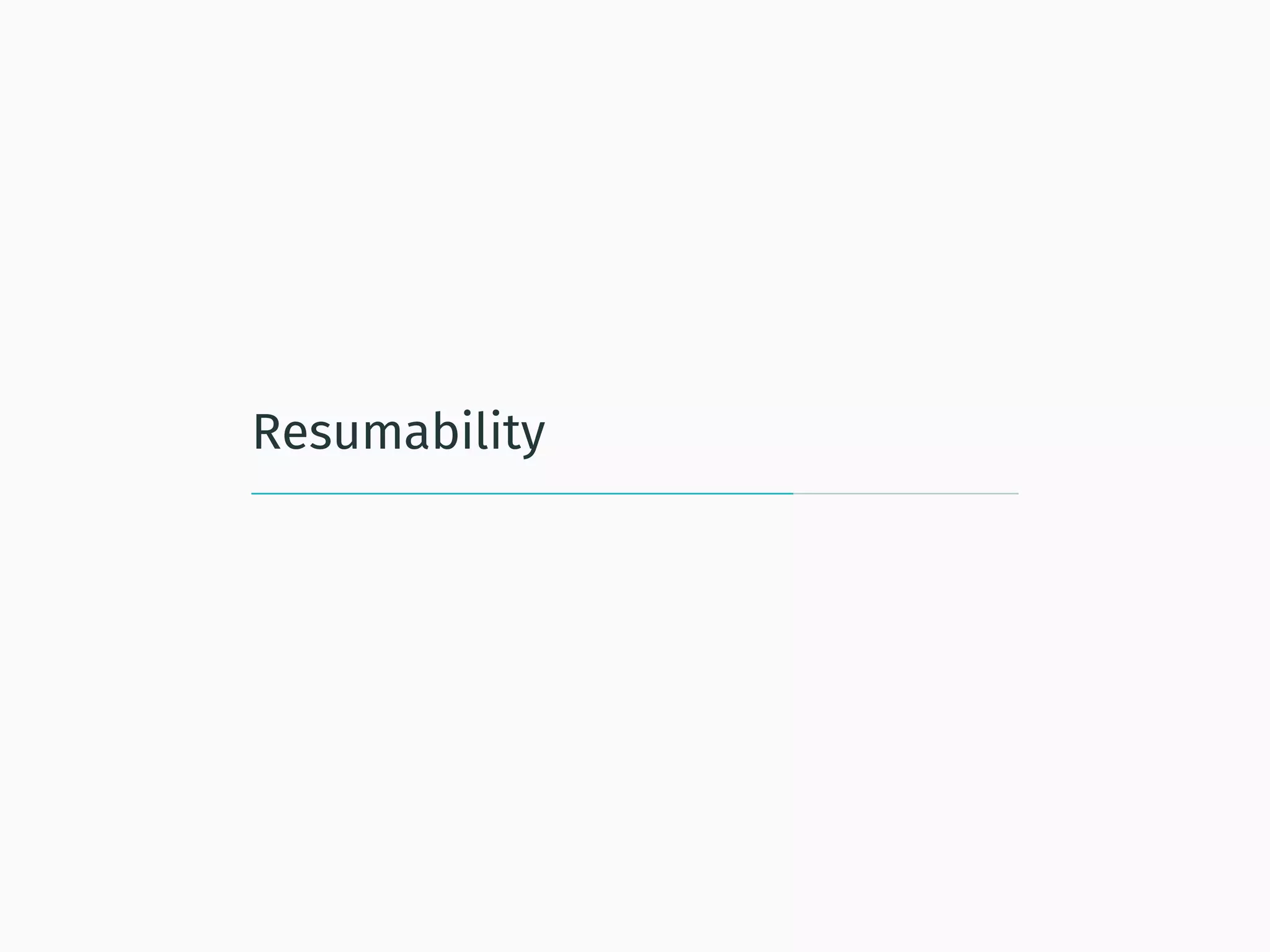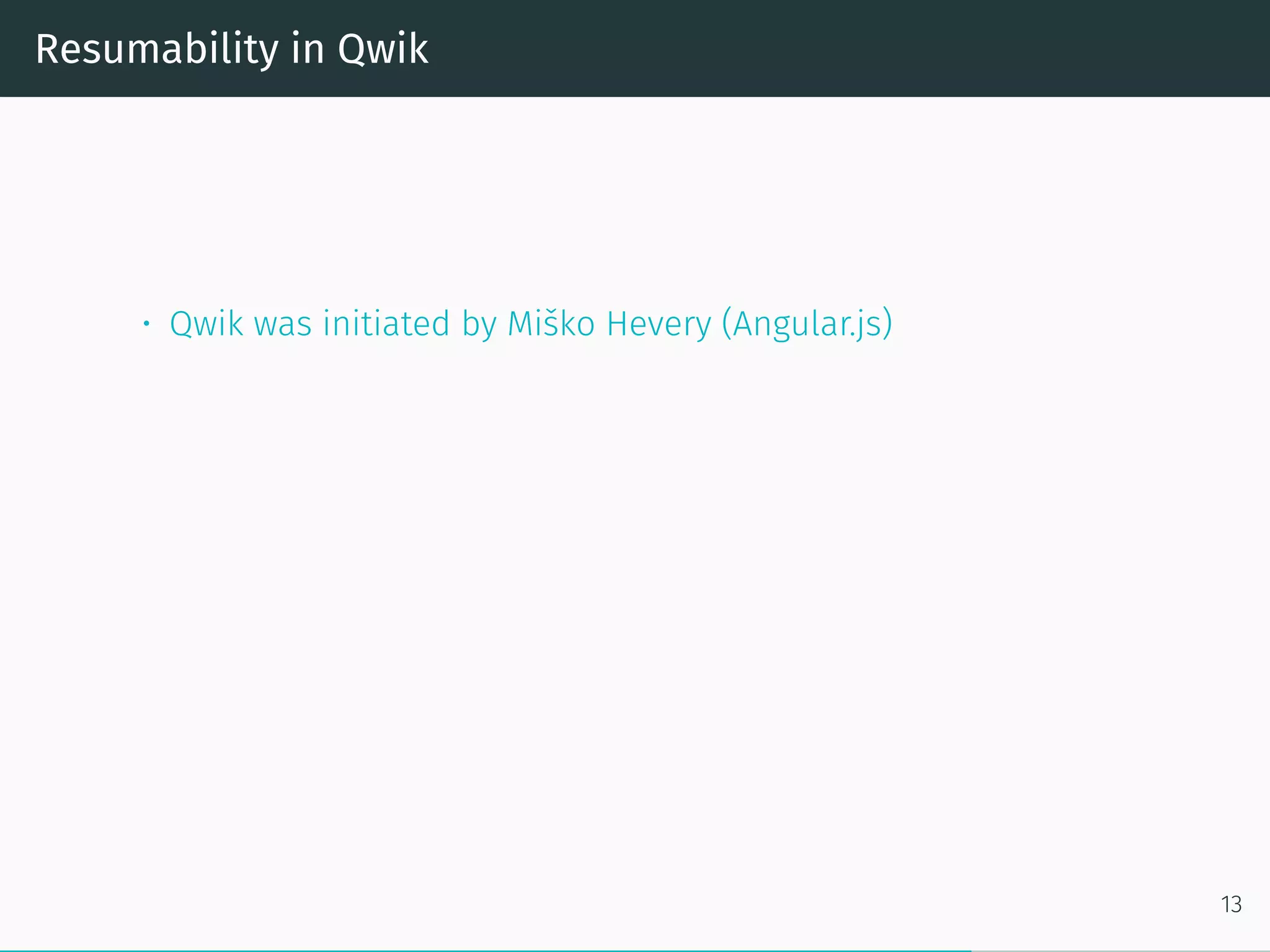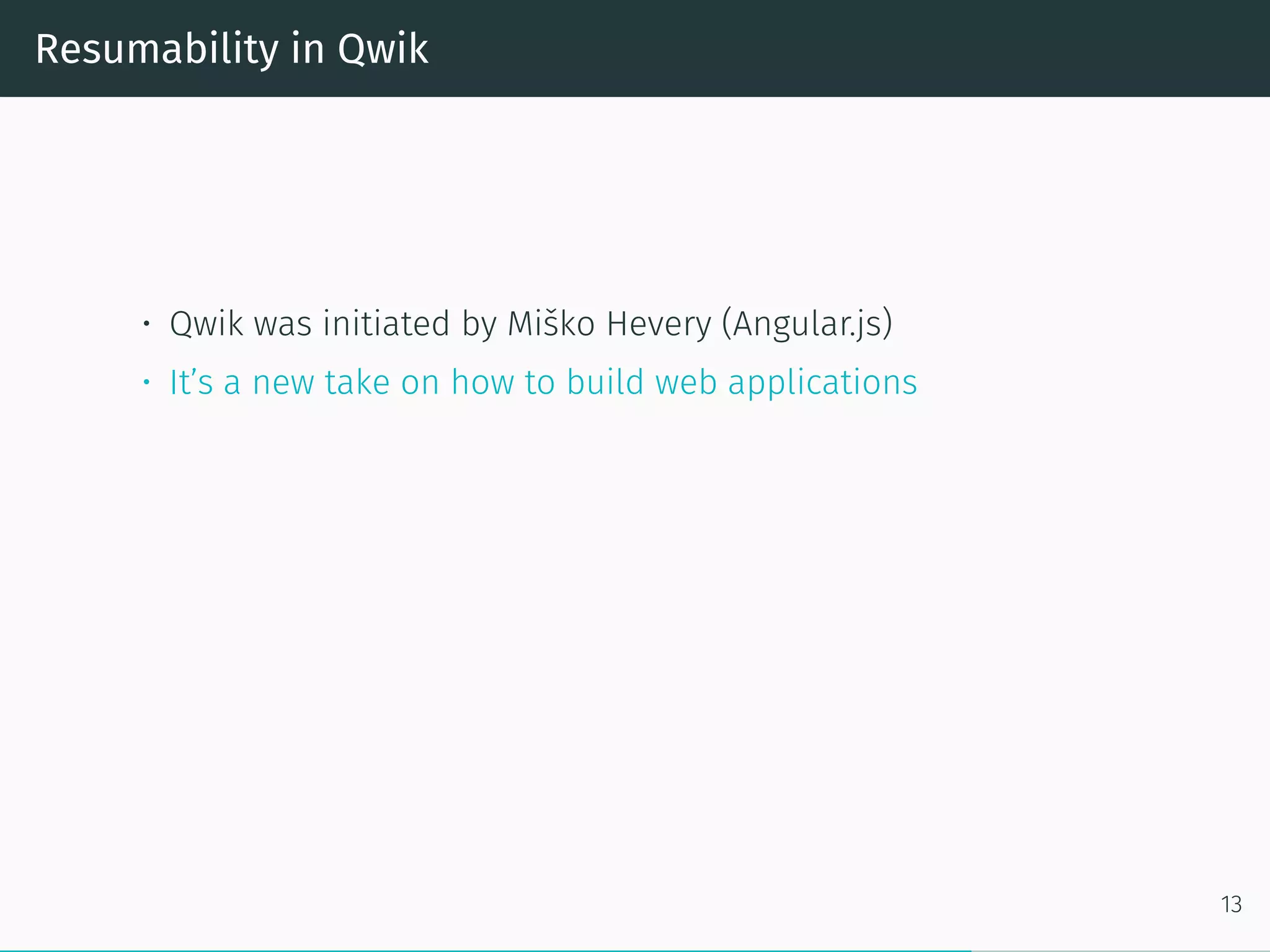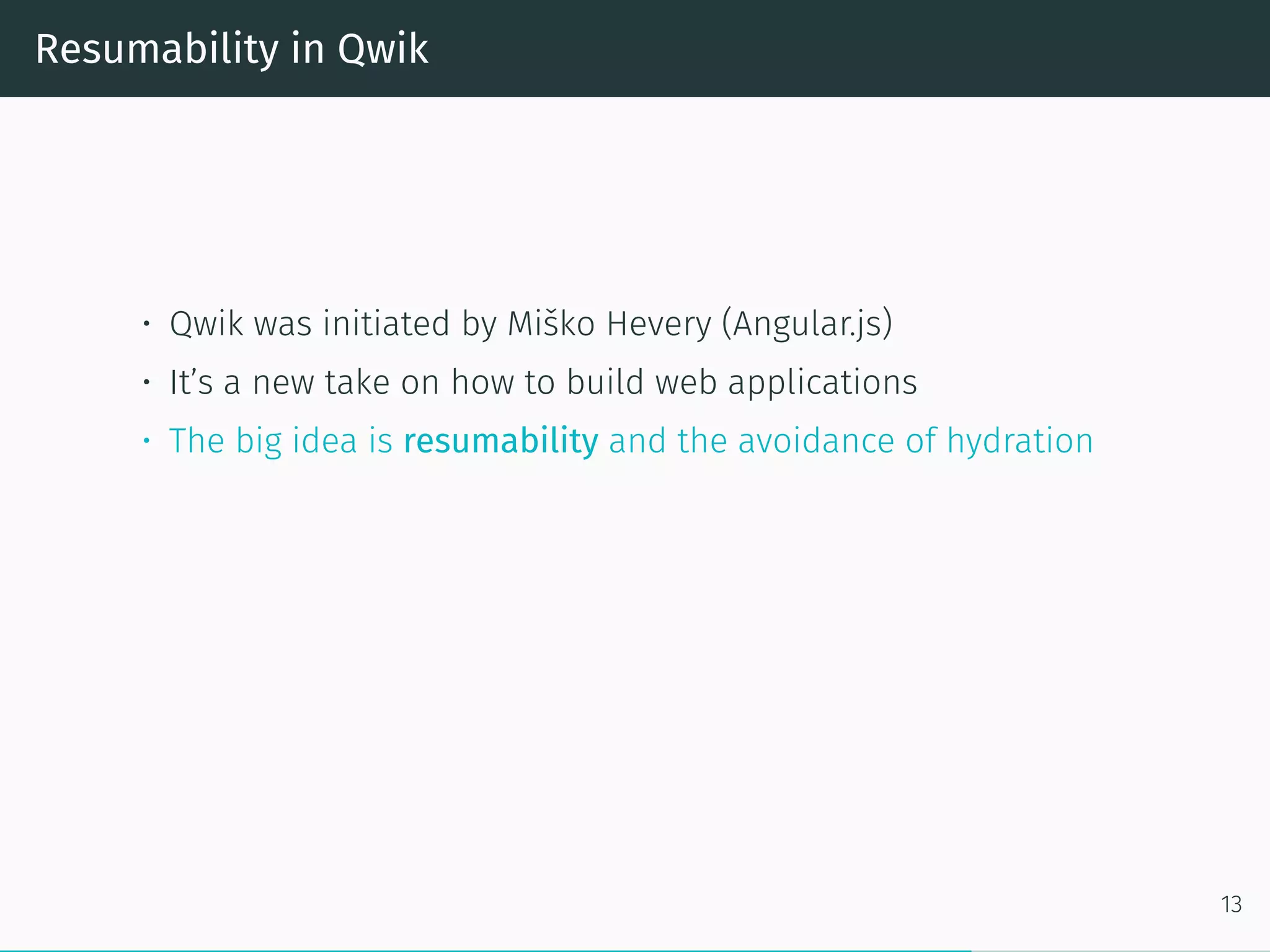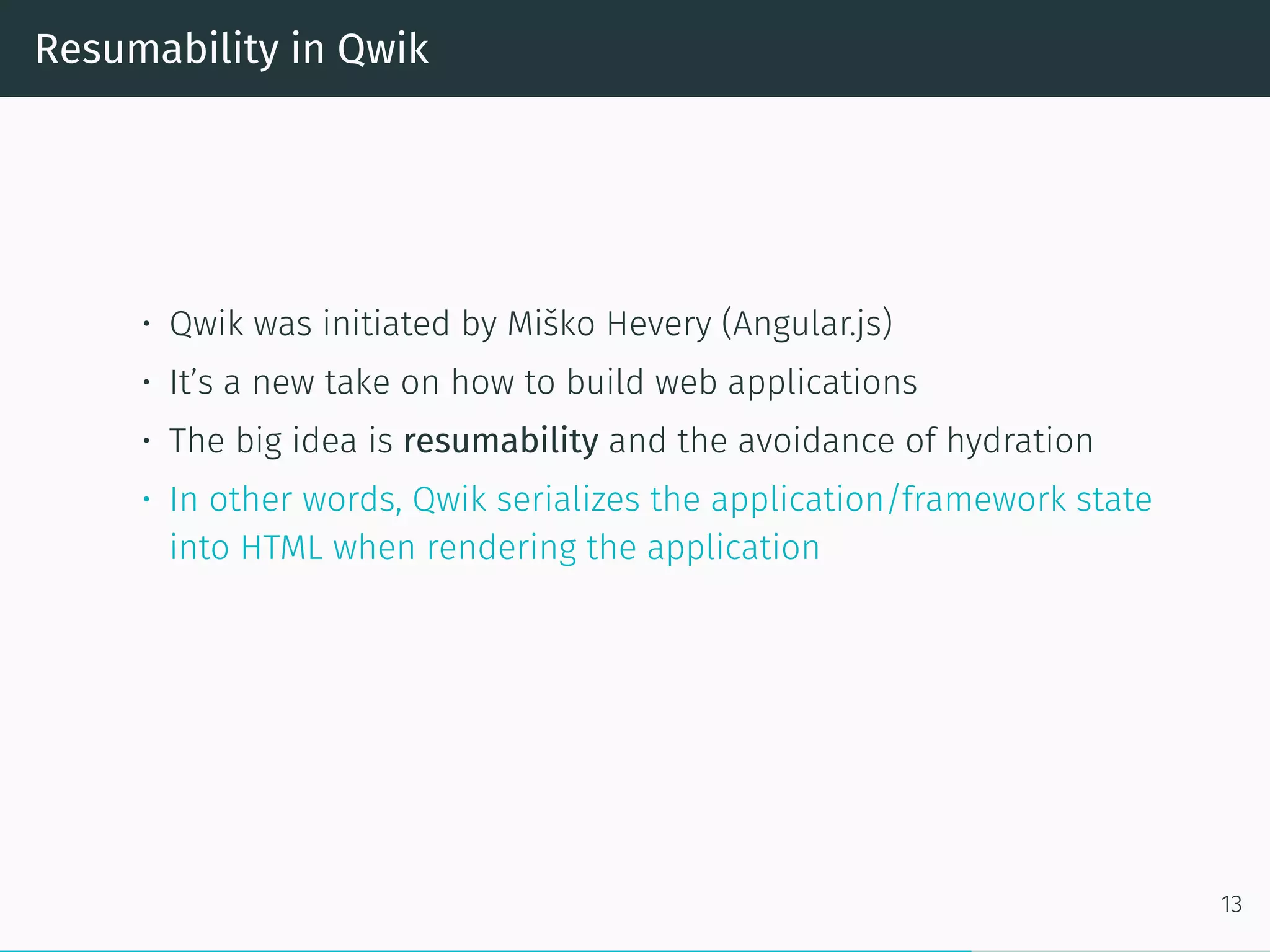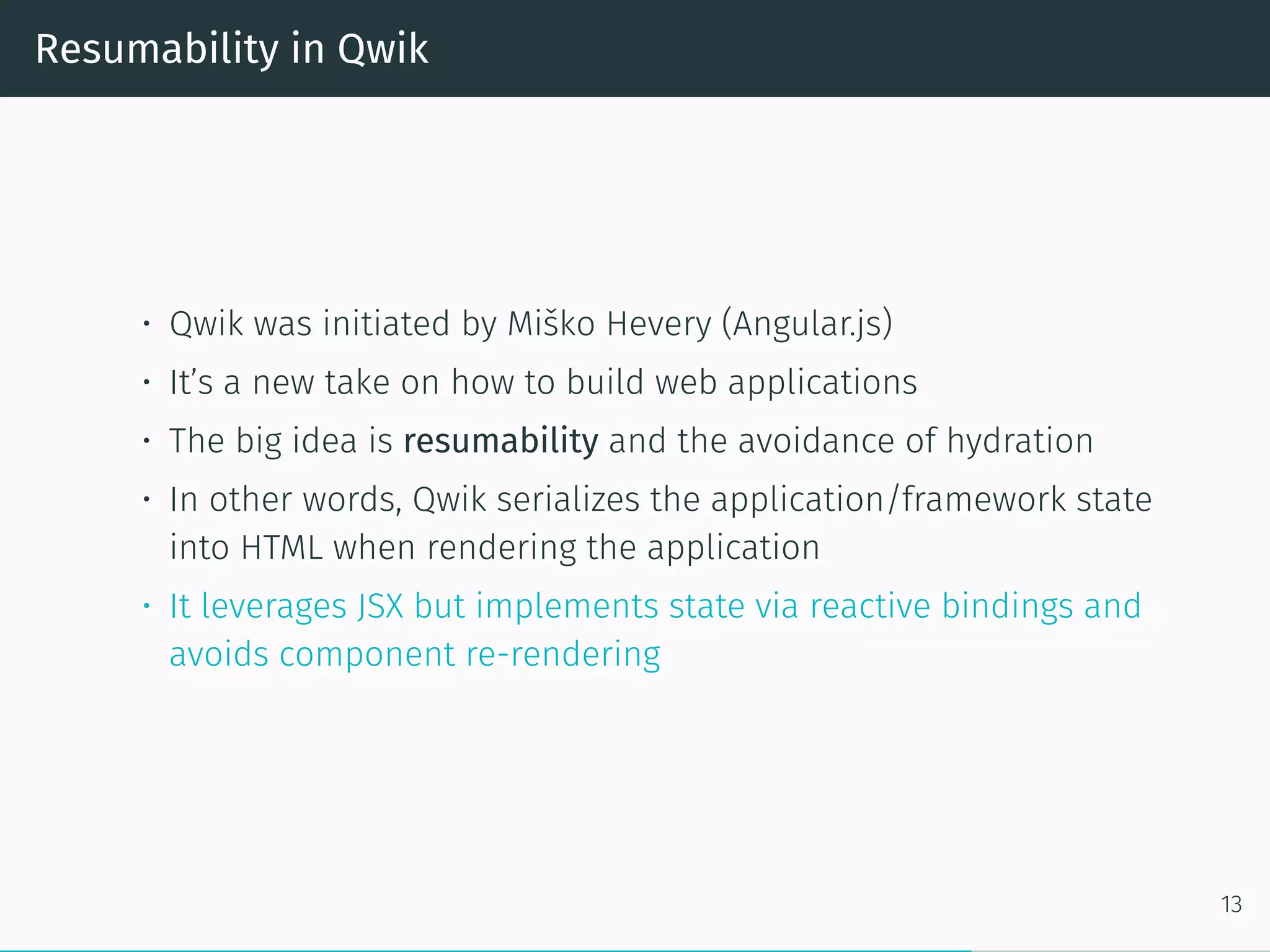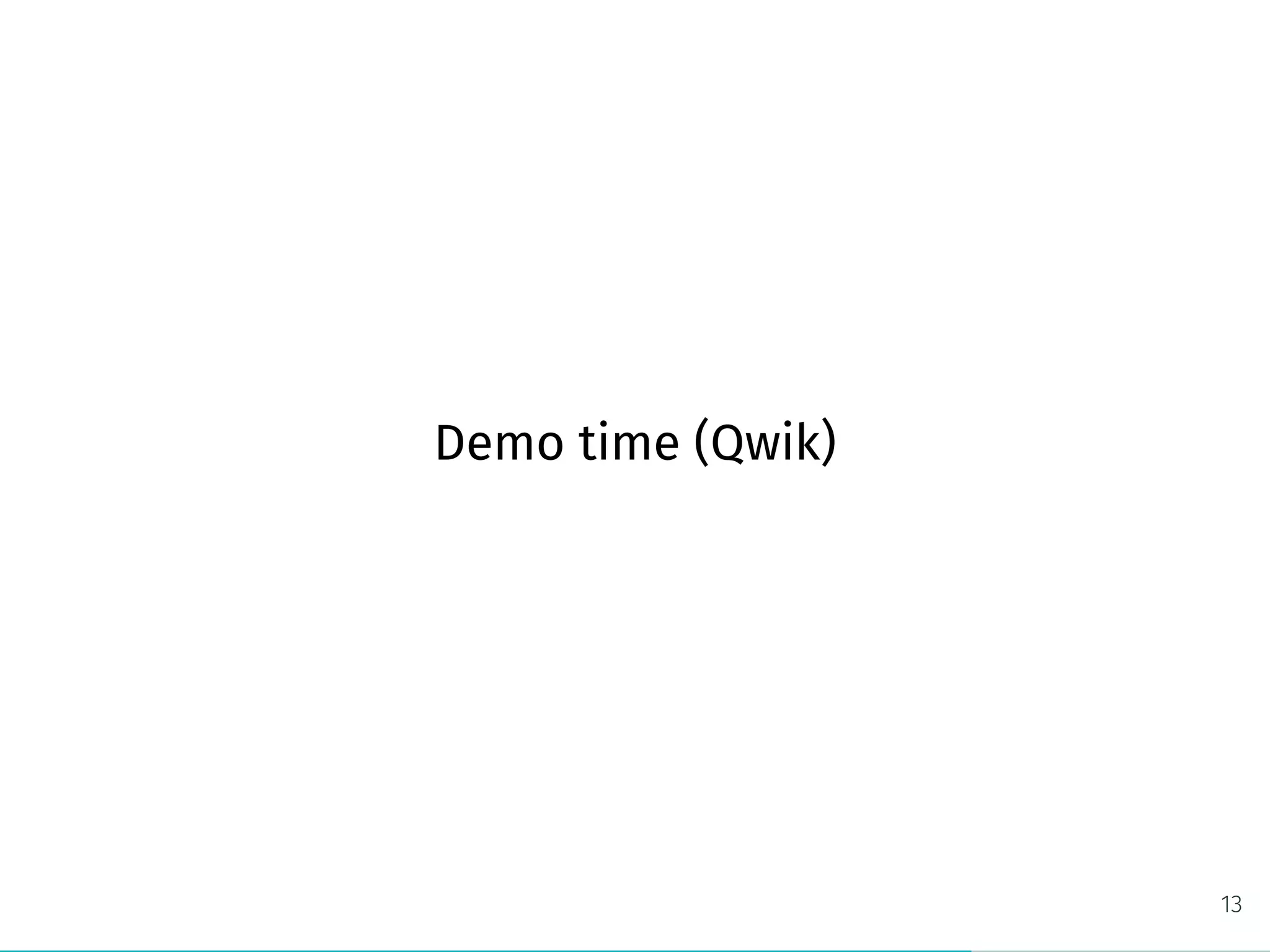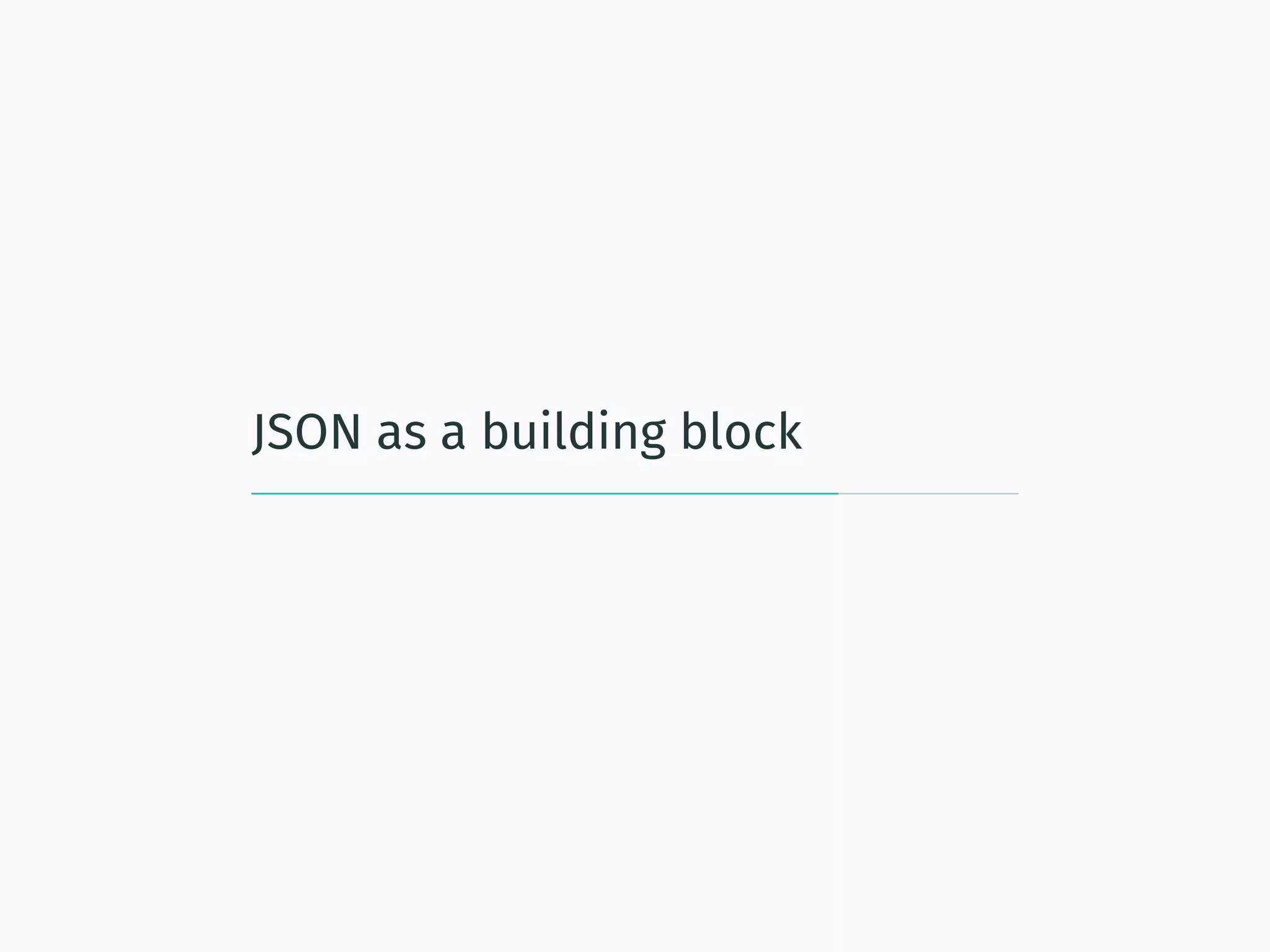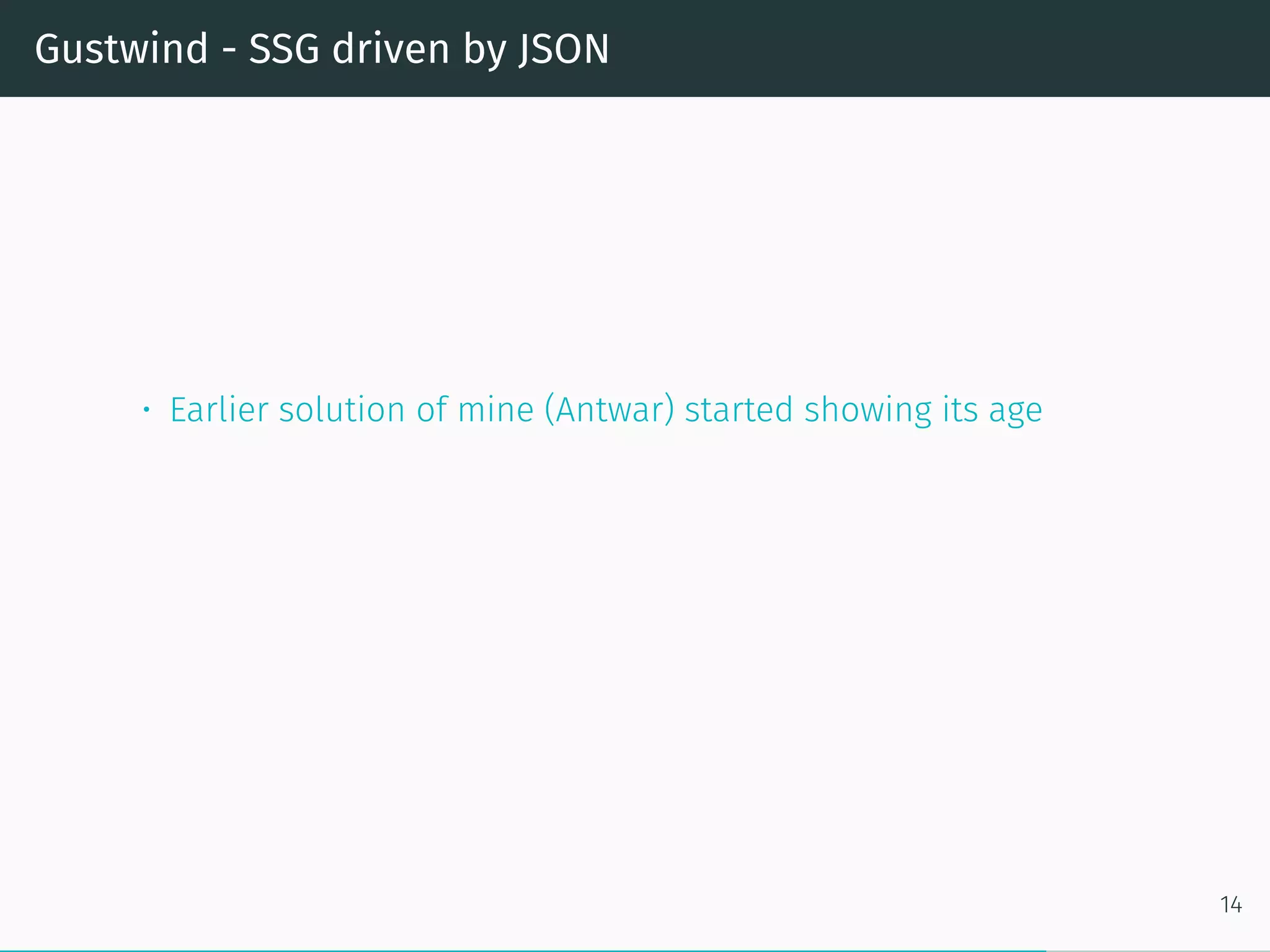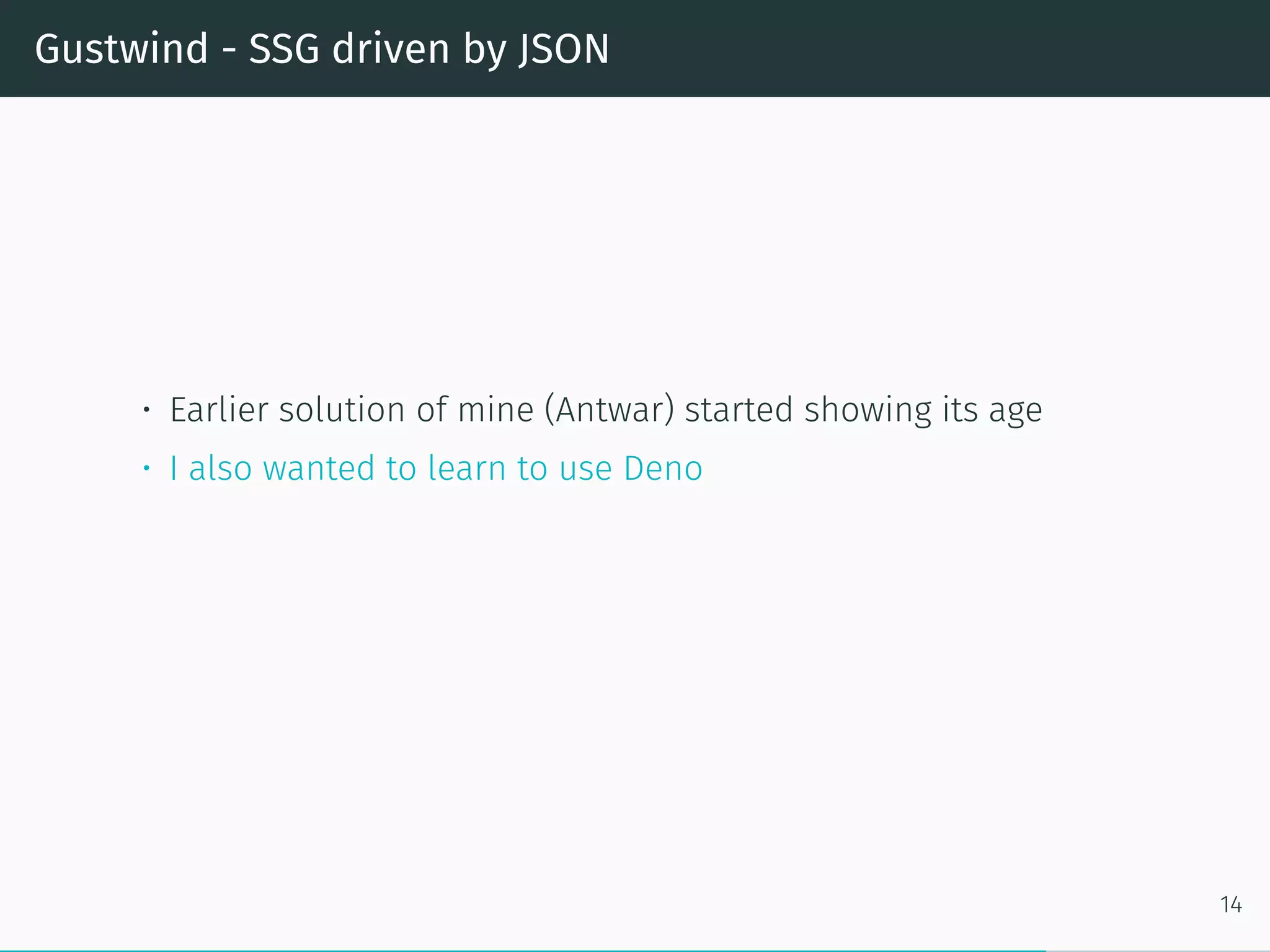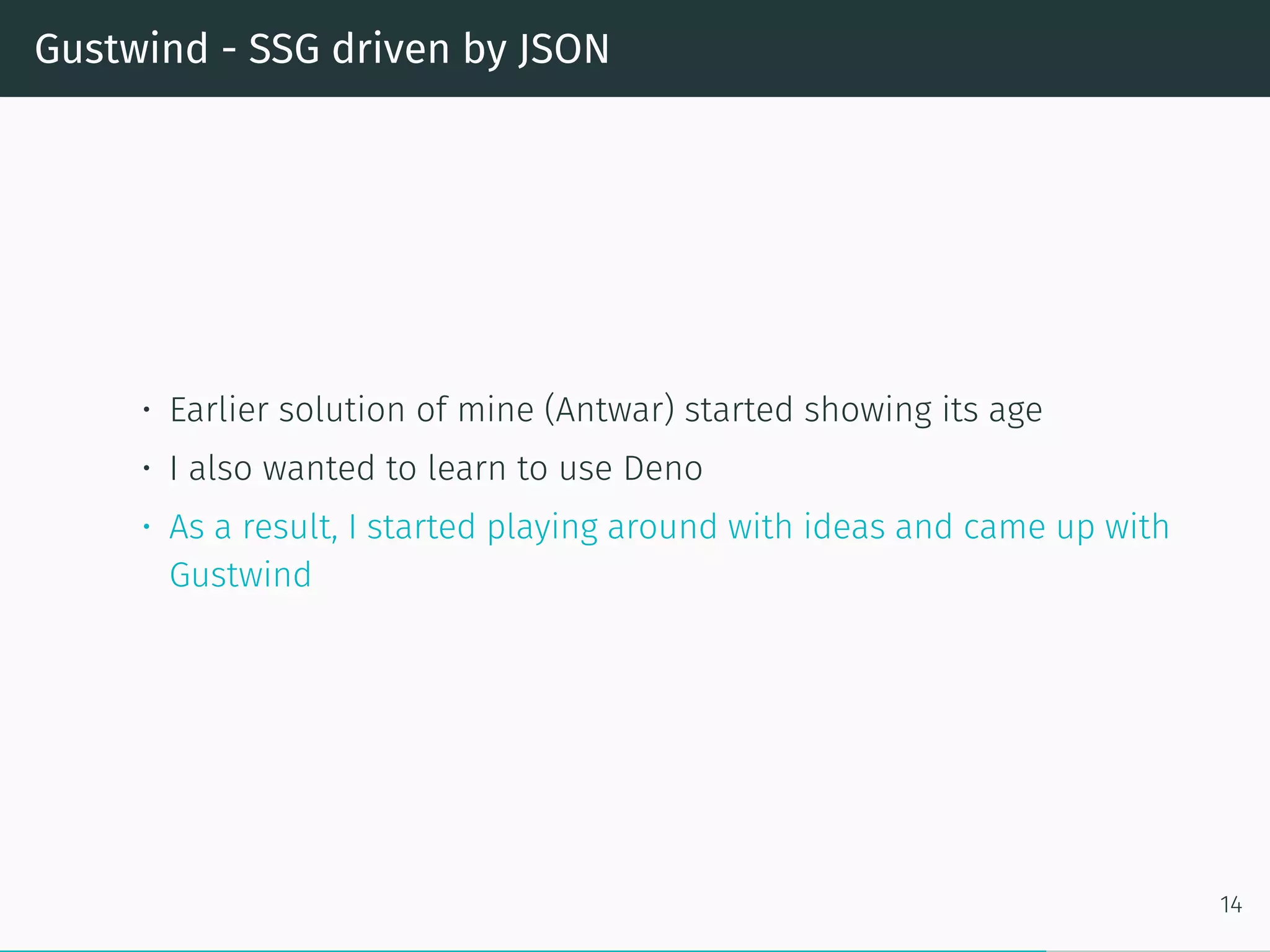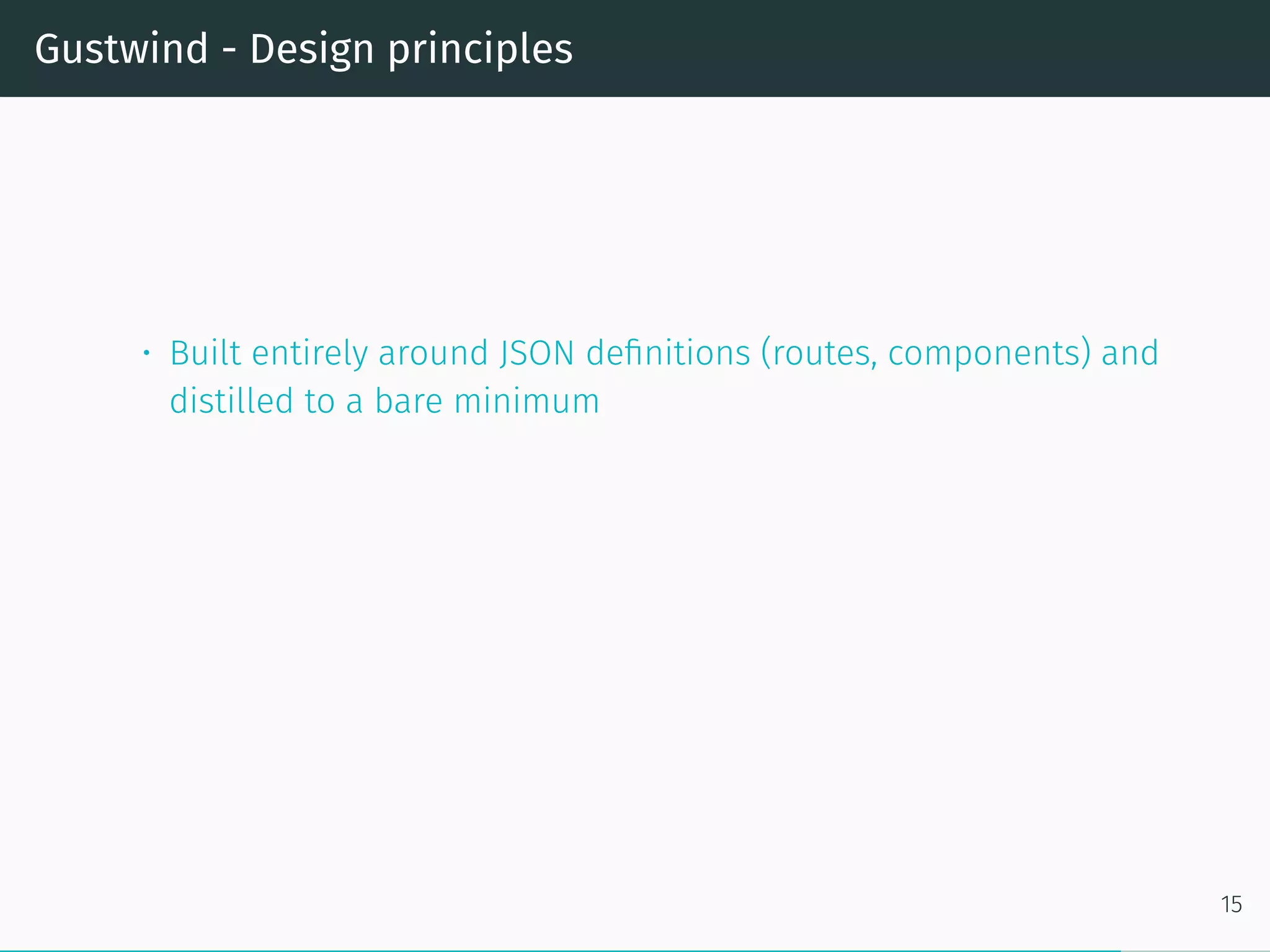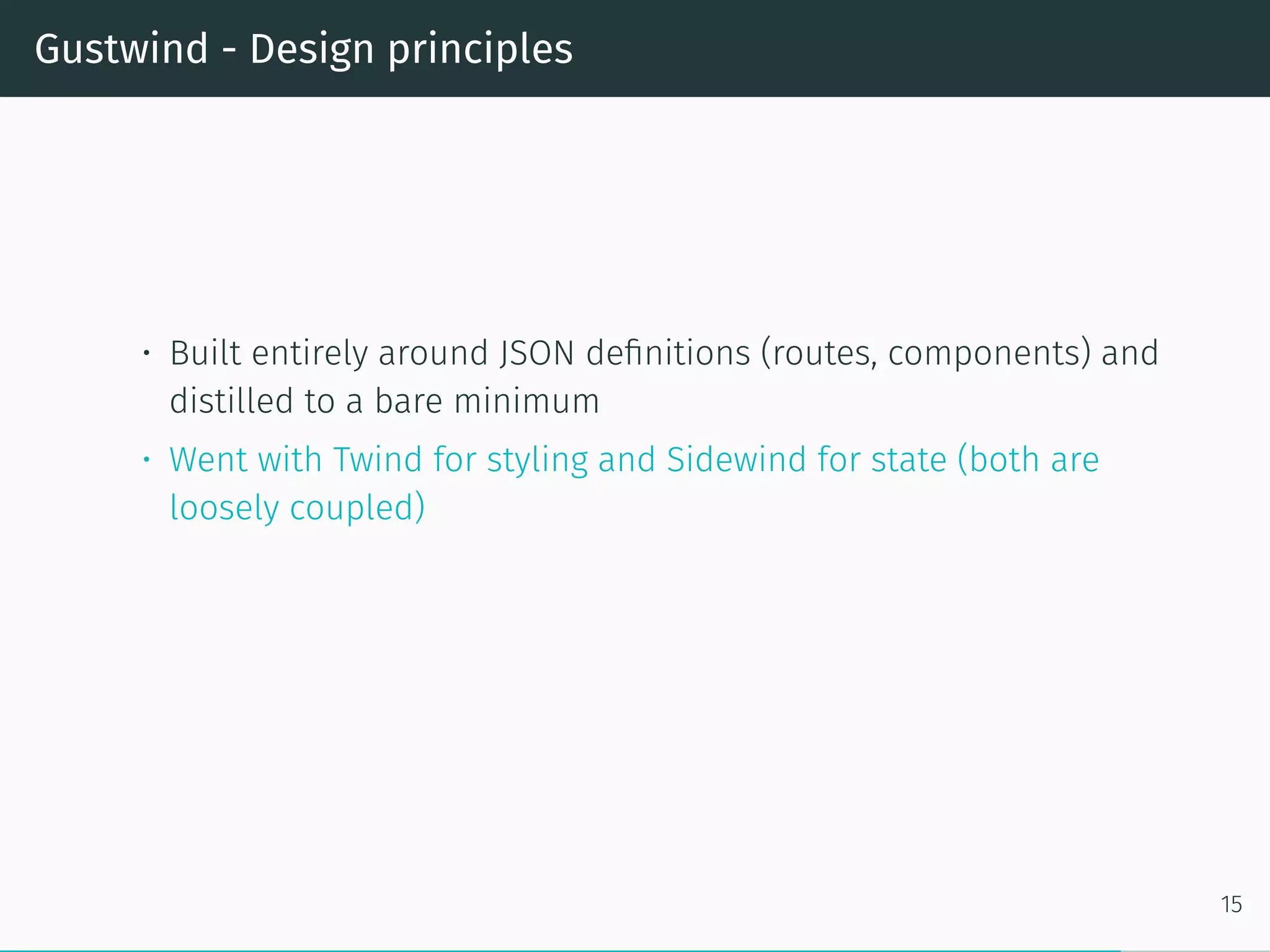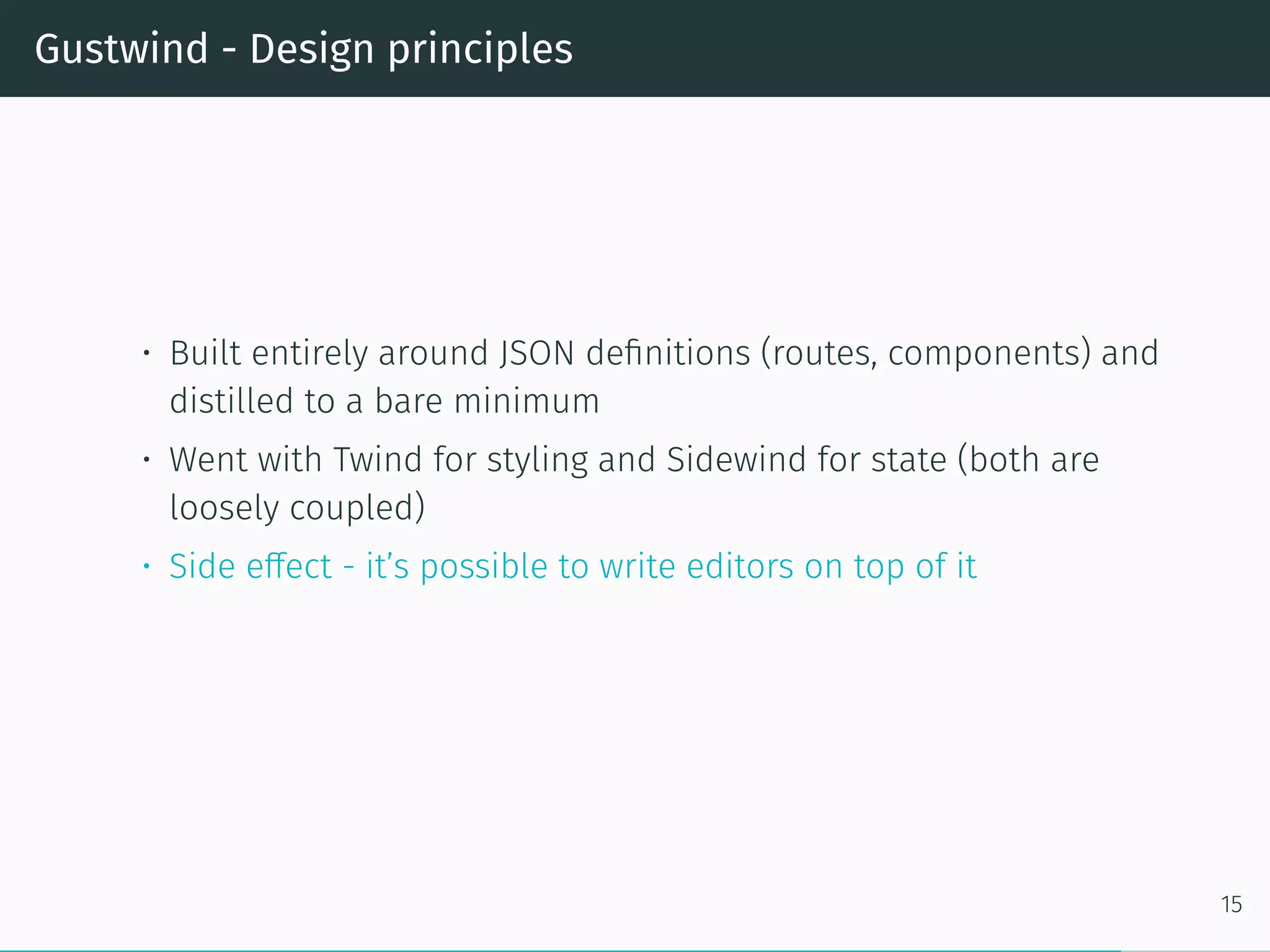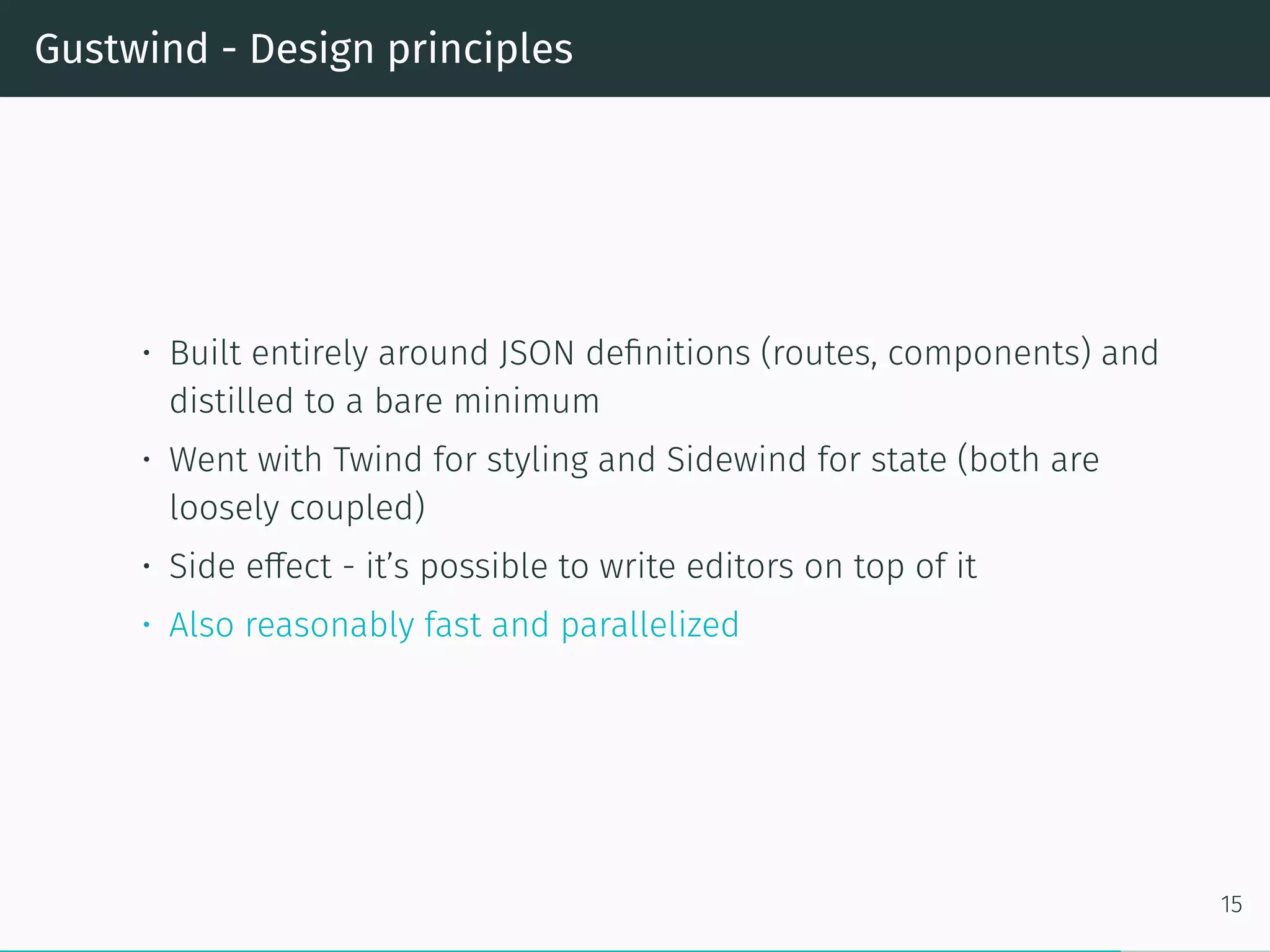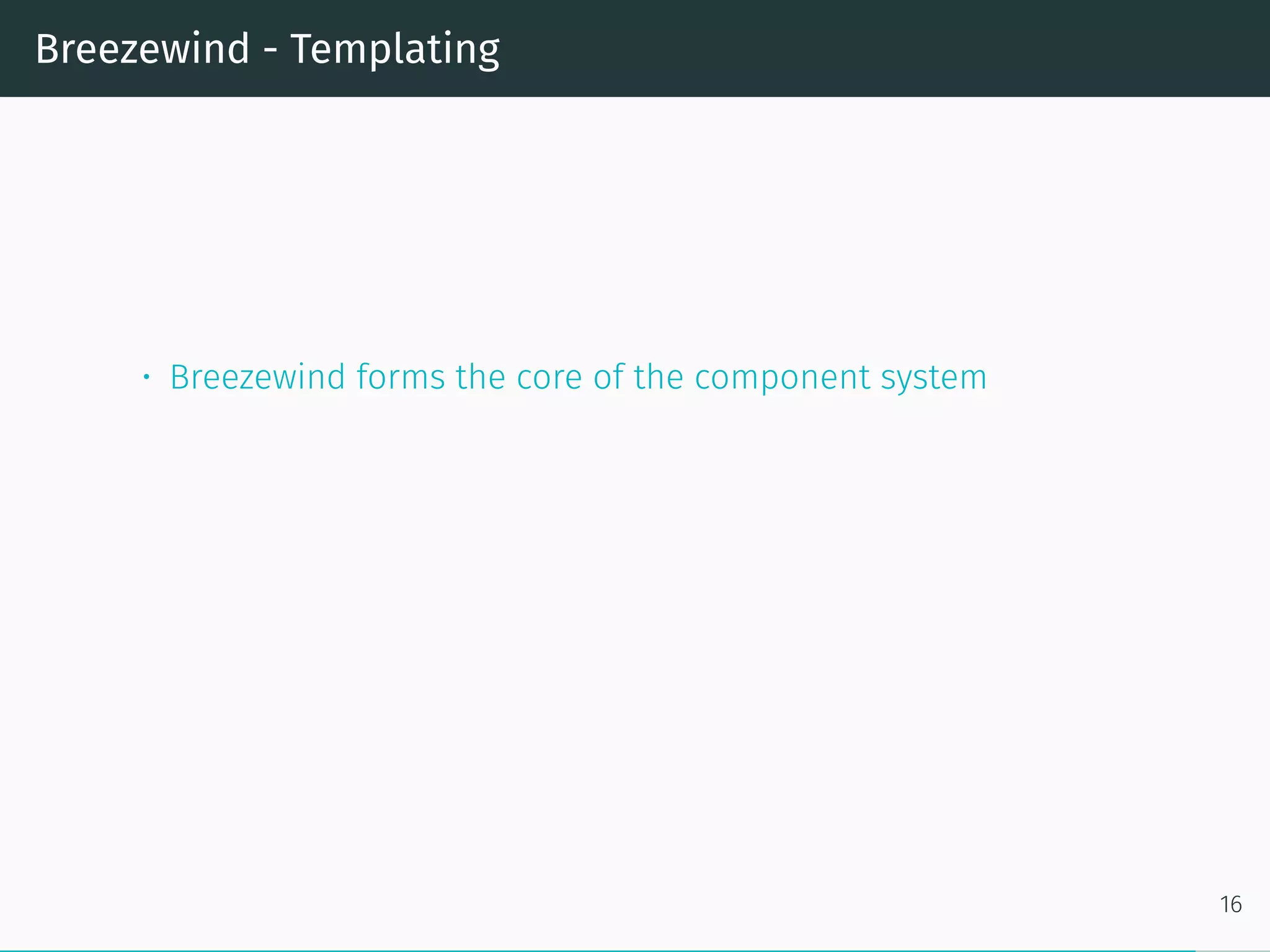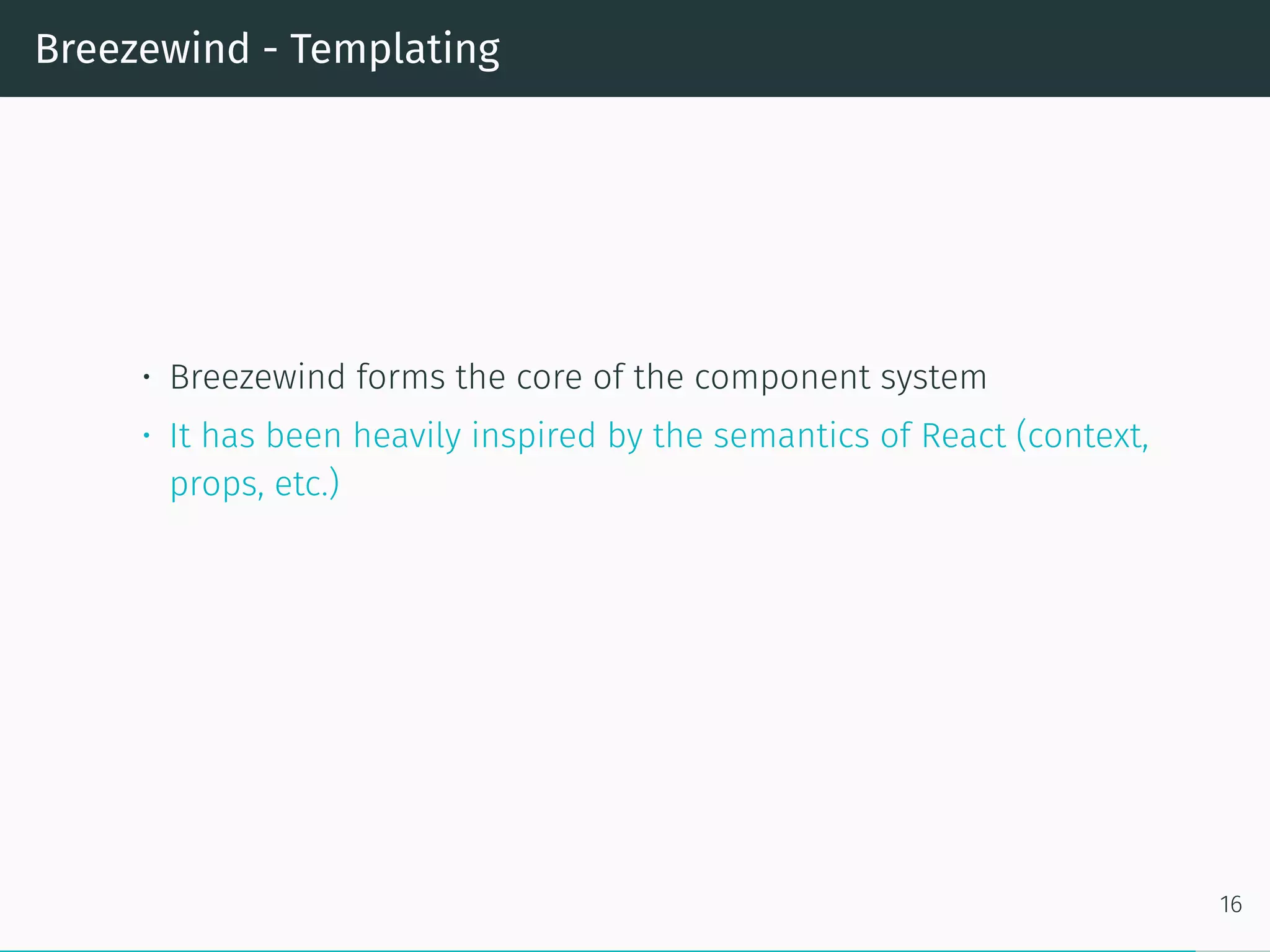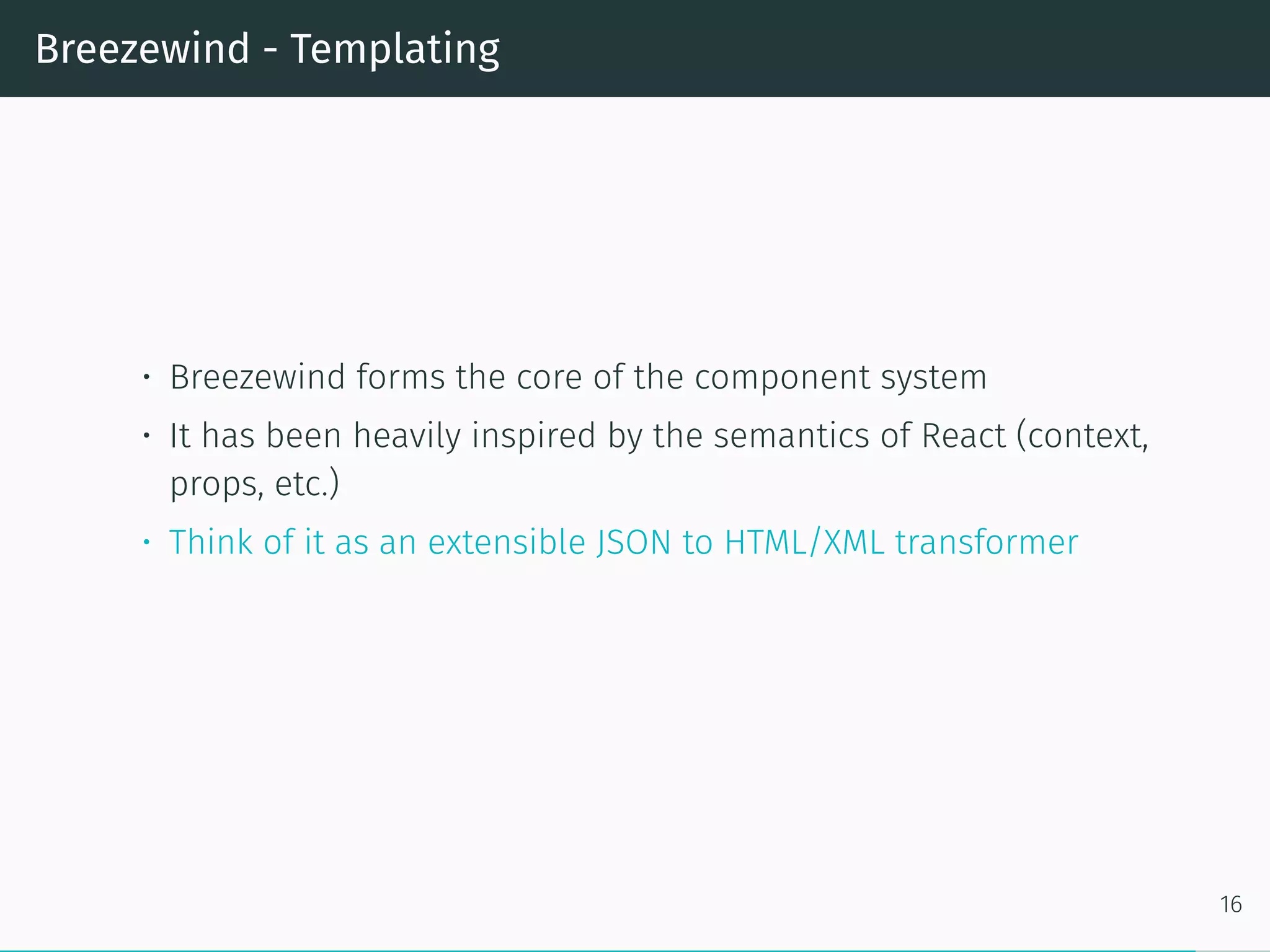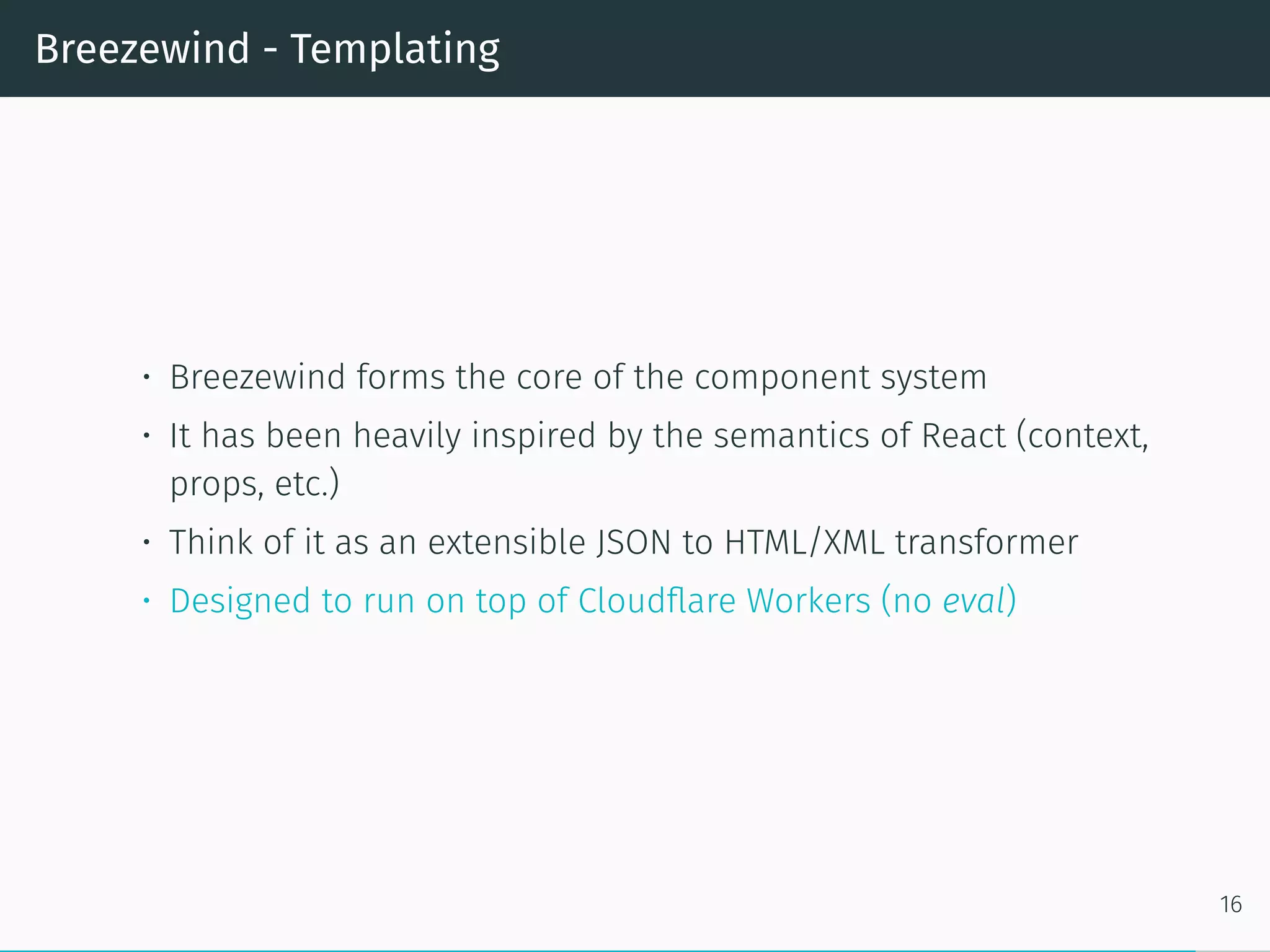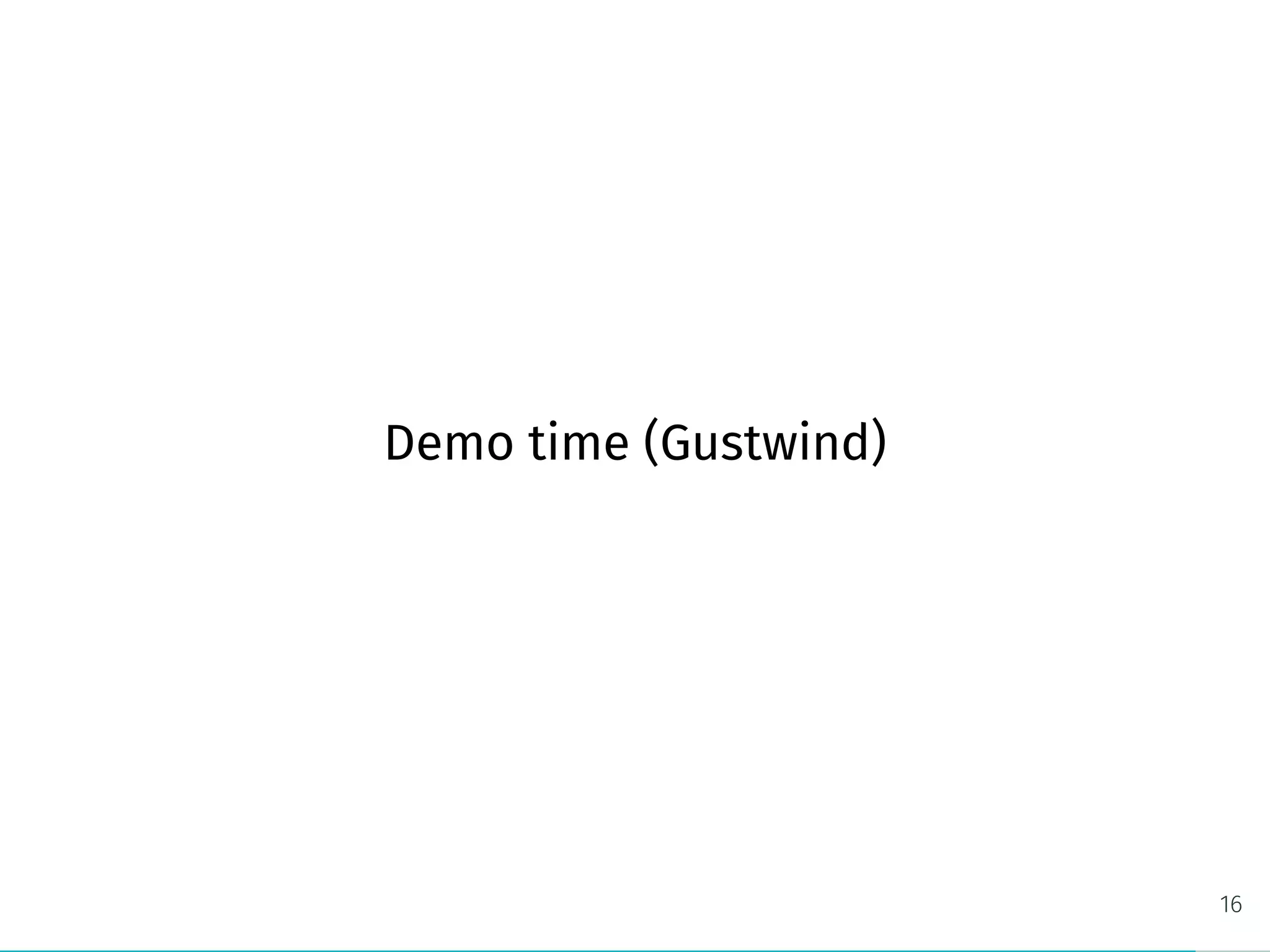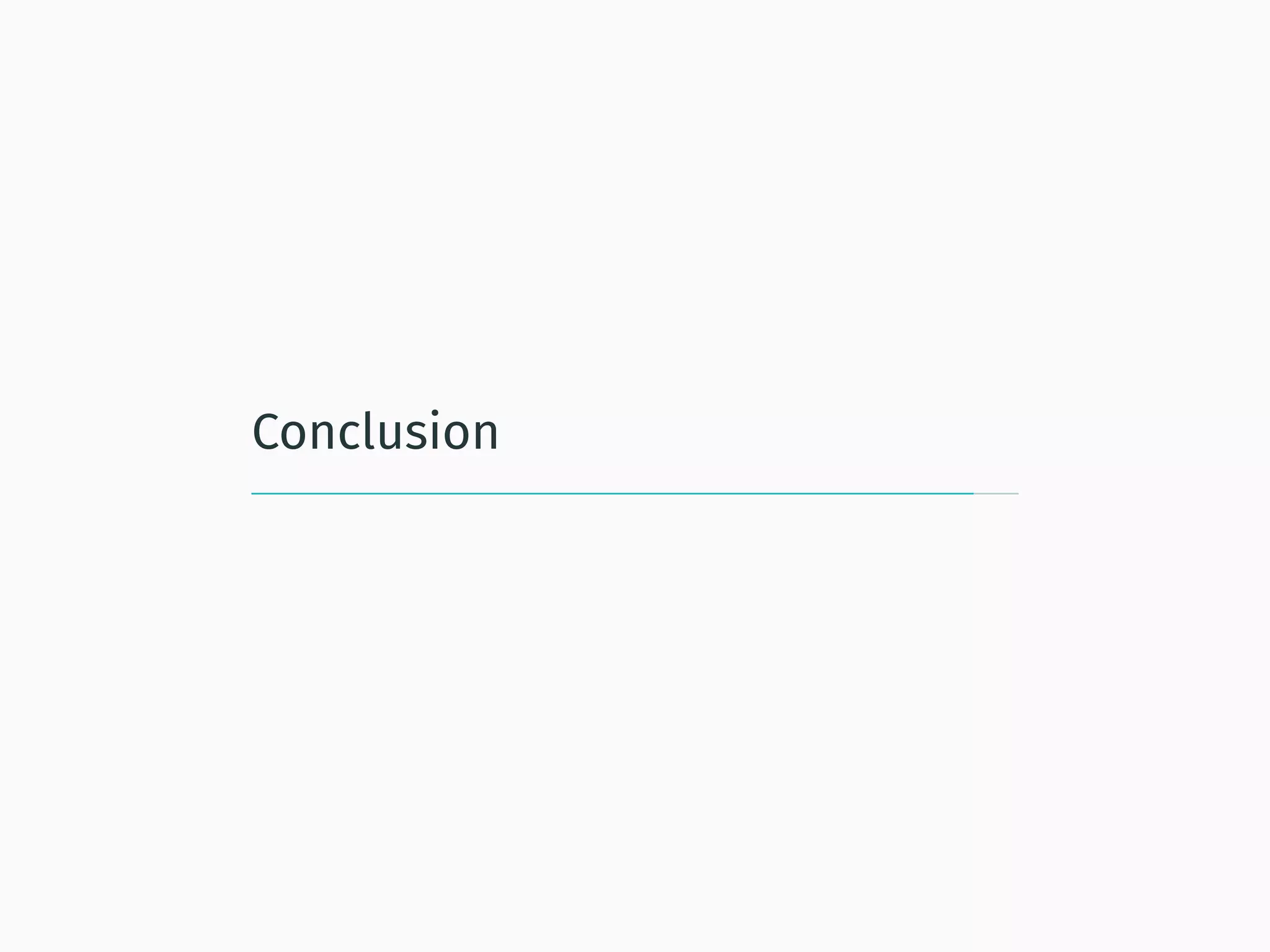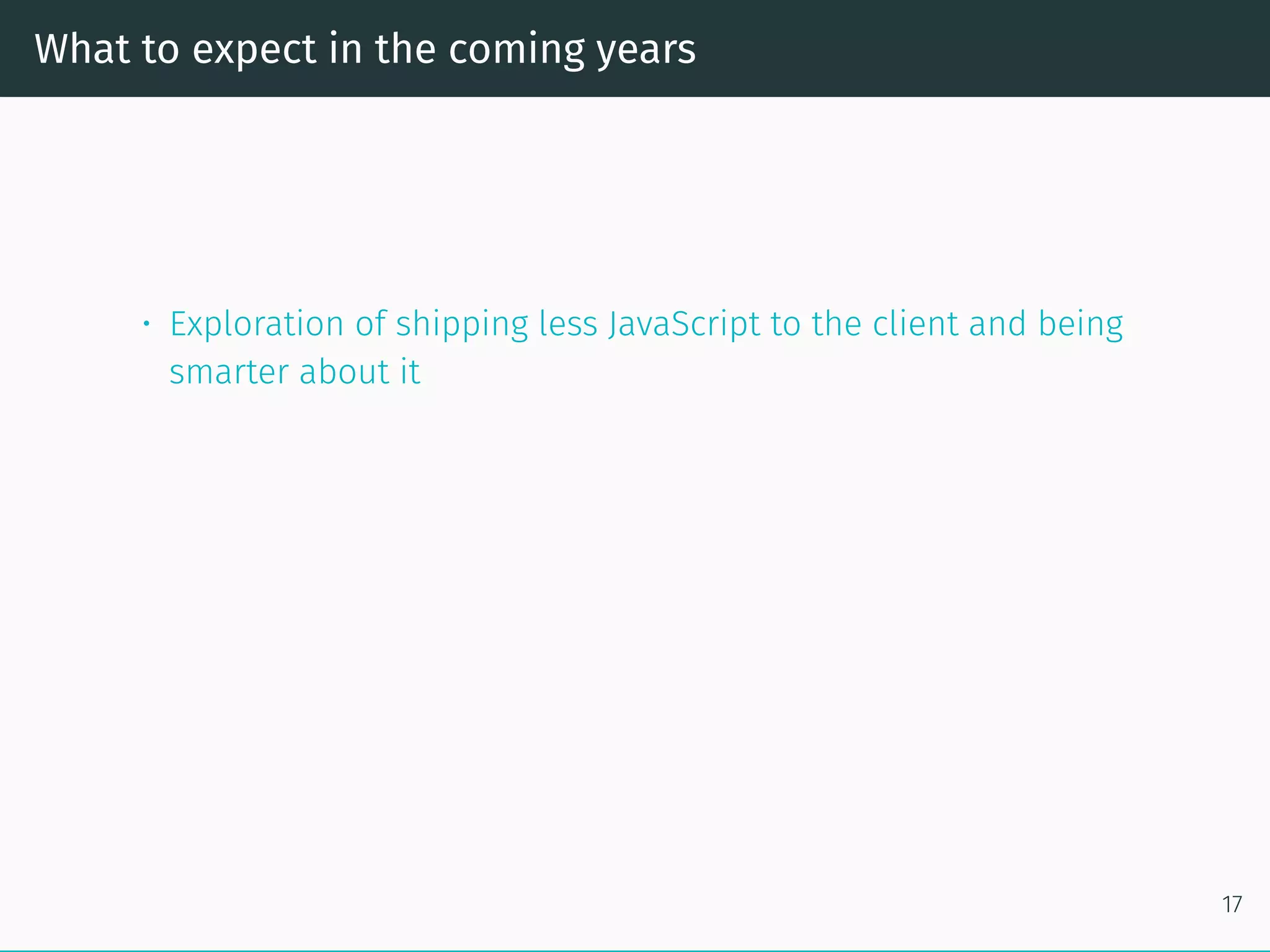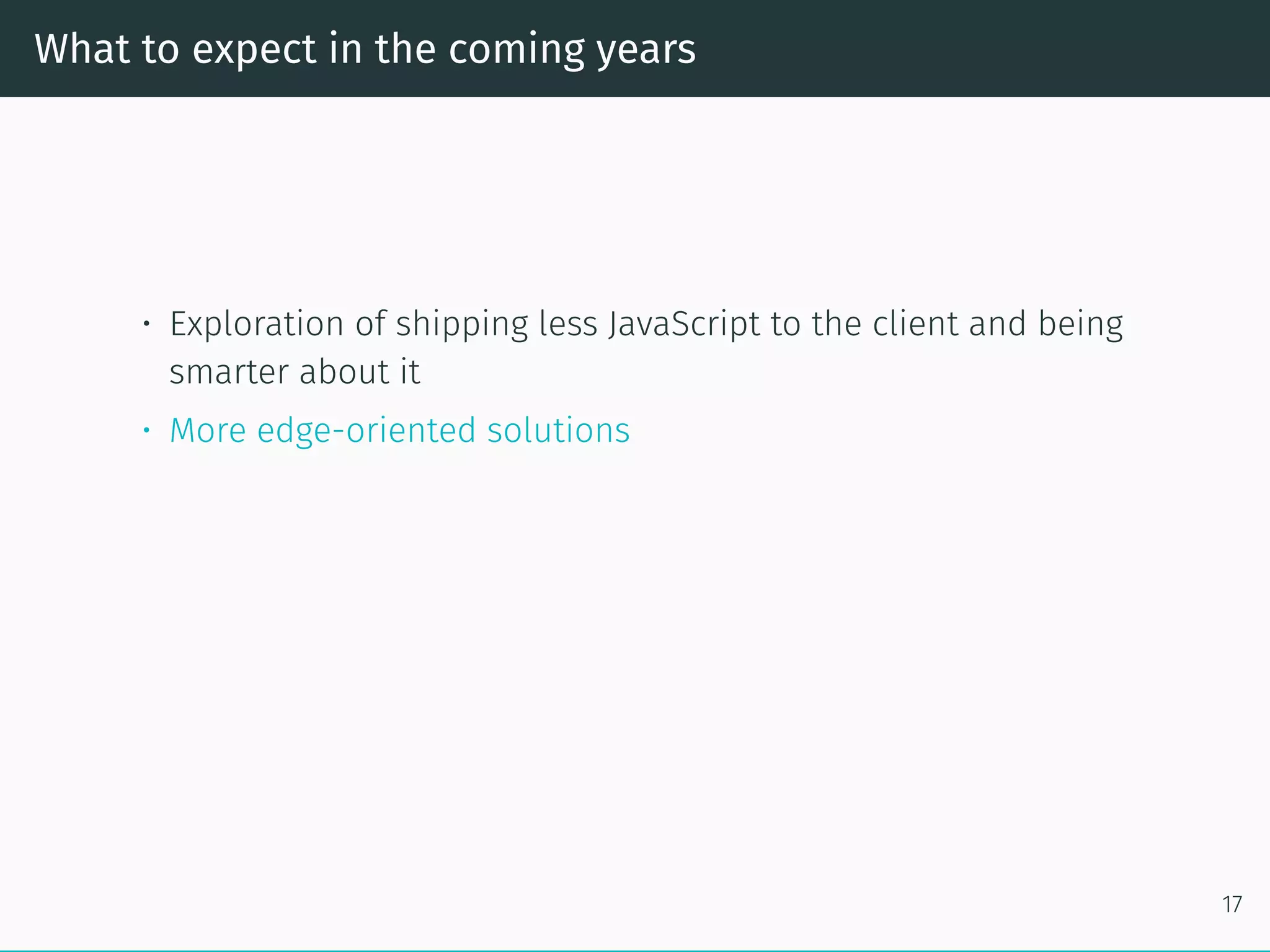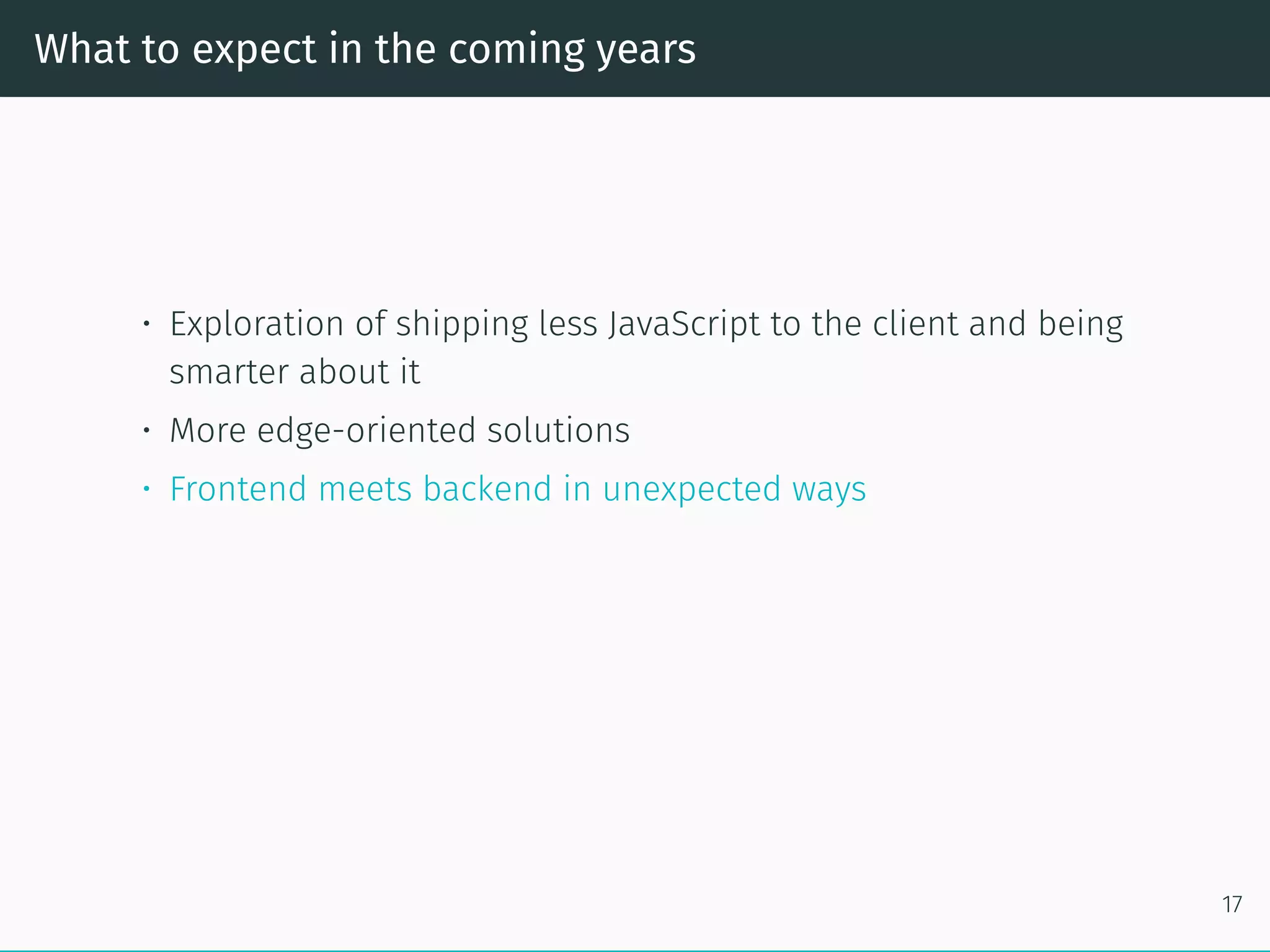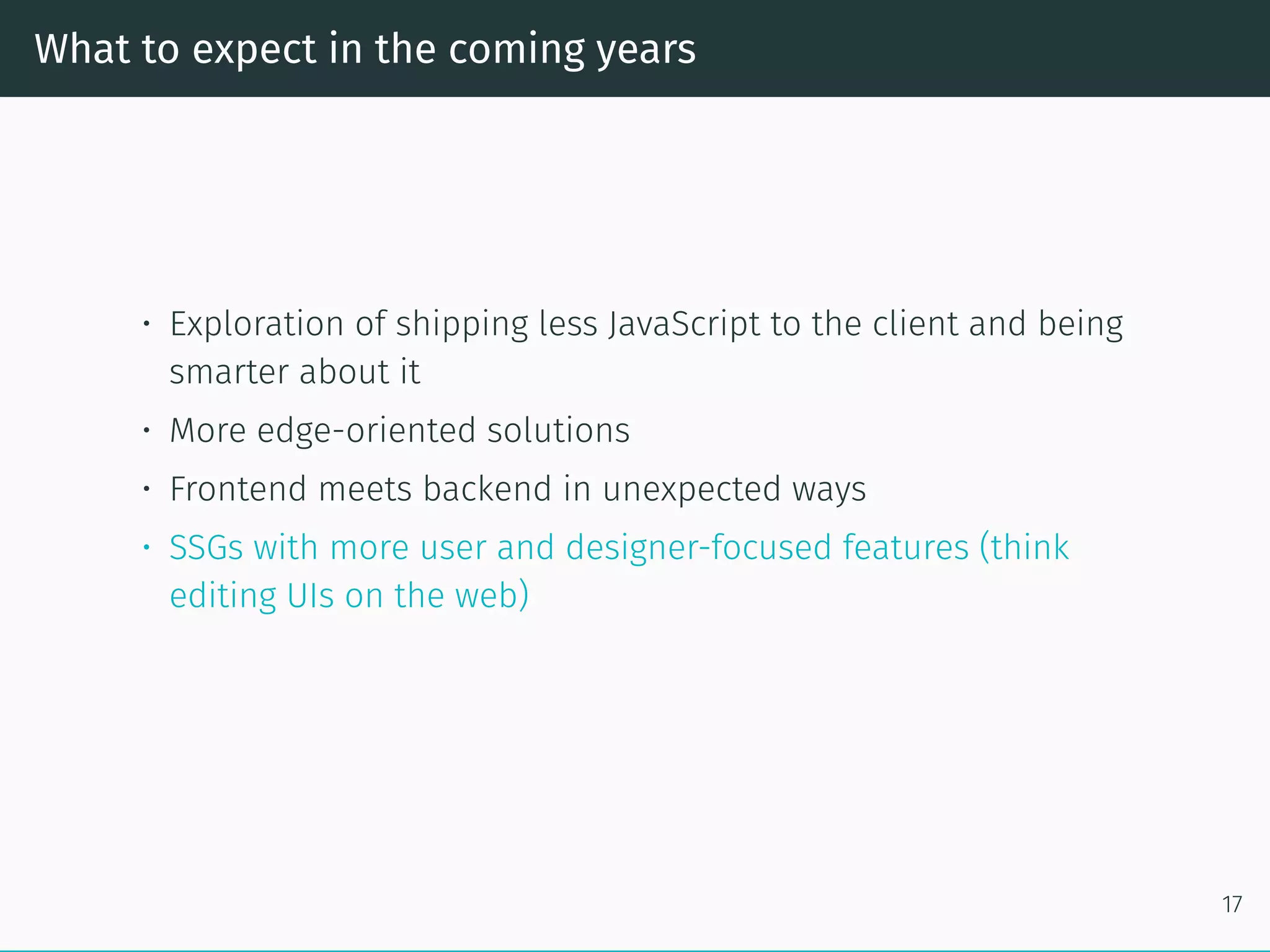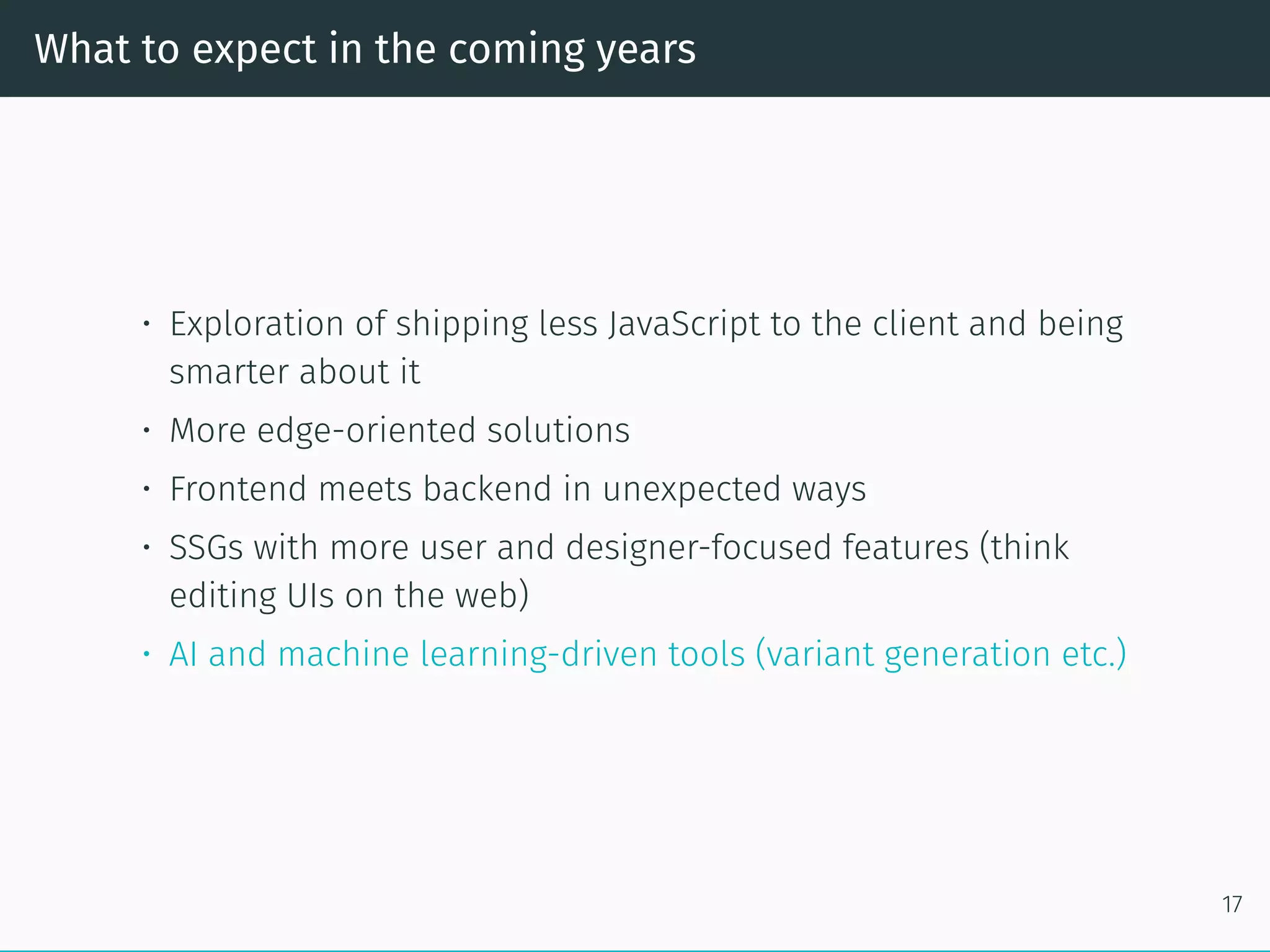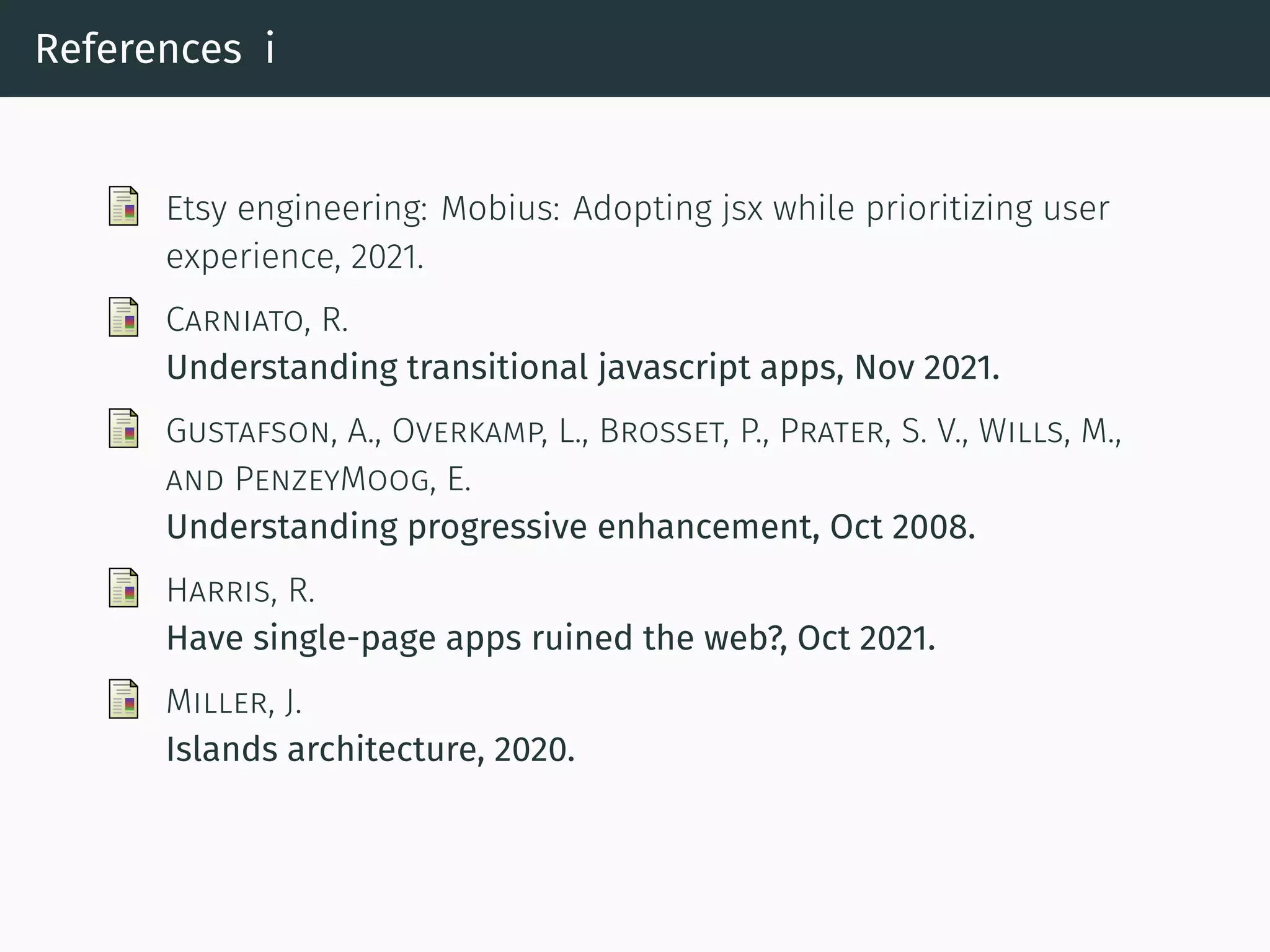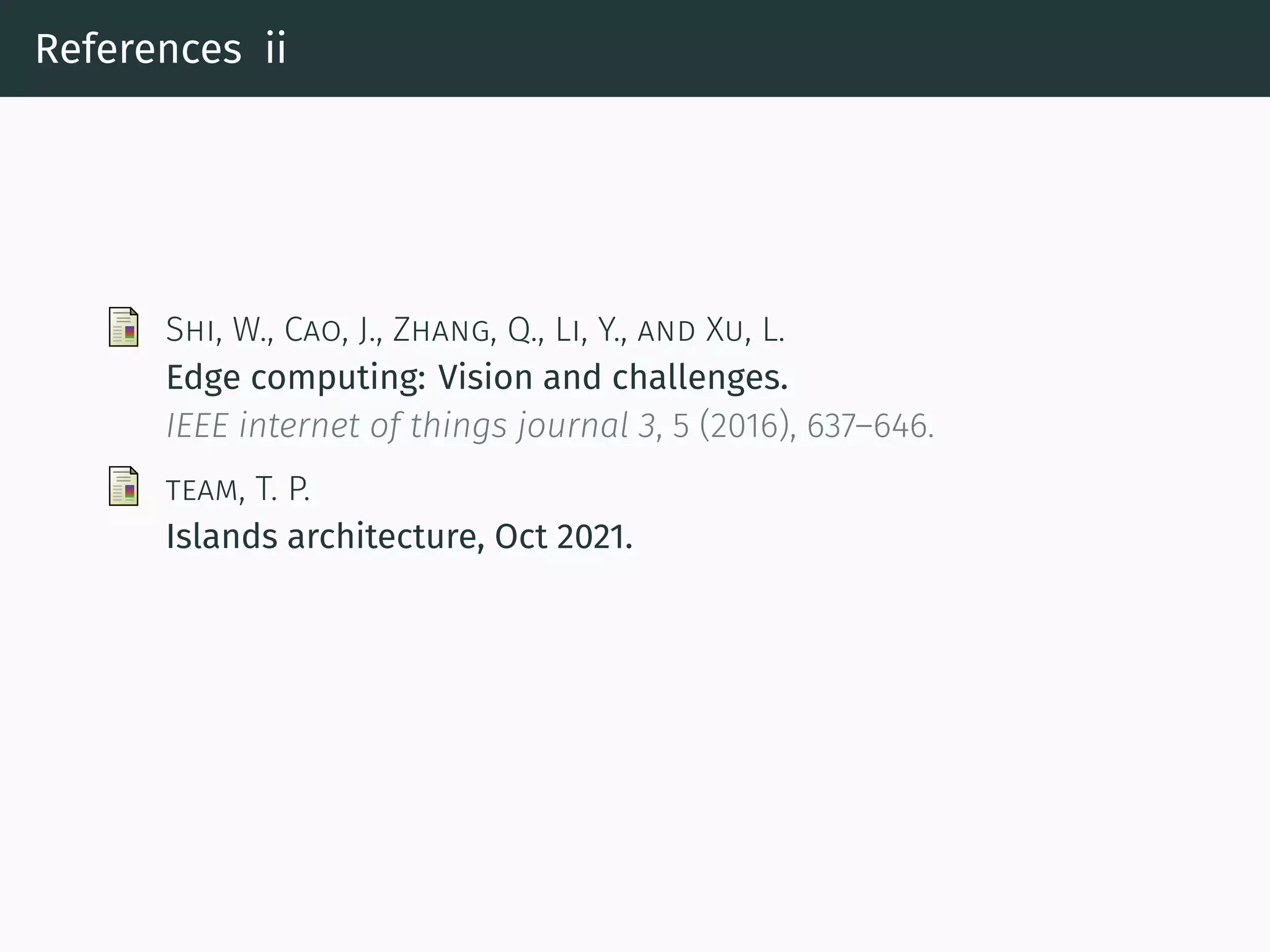The document discusses future trends in JavaScript frameworks, highlighting concepts such as Transitional Web Applications (TWAs), islands architecture, and resumability. It explores upcoming technologies like SolidJS, Marko, and Qwik, which focus on optimizing performance by minimizing JavaScript load and embracing new architectural approaches. The document concludes with expectations for reduced client-side JavaScript, more edge-oriented solutions, and the integration of AI-driven tools in web development.
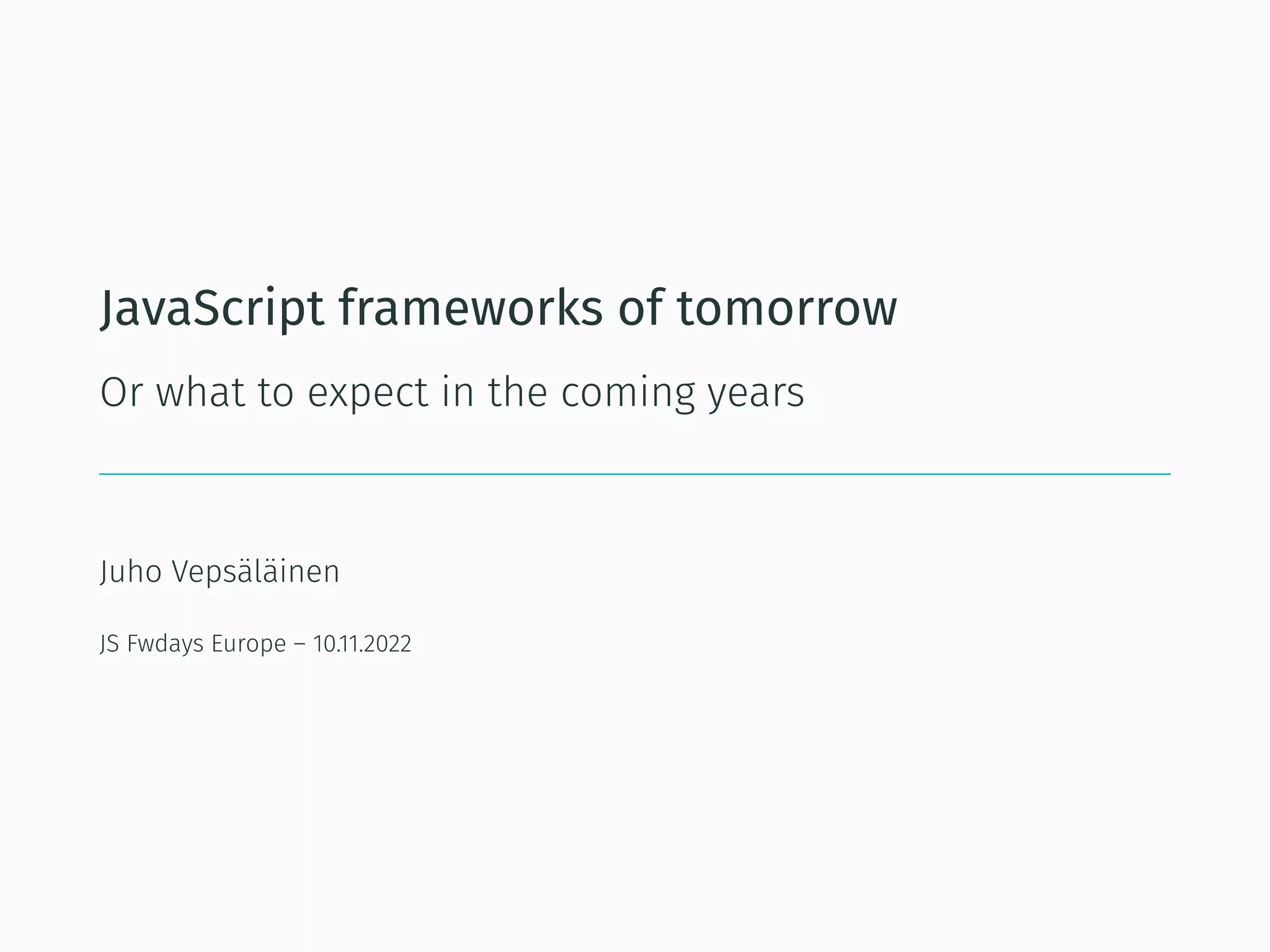
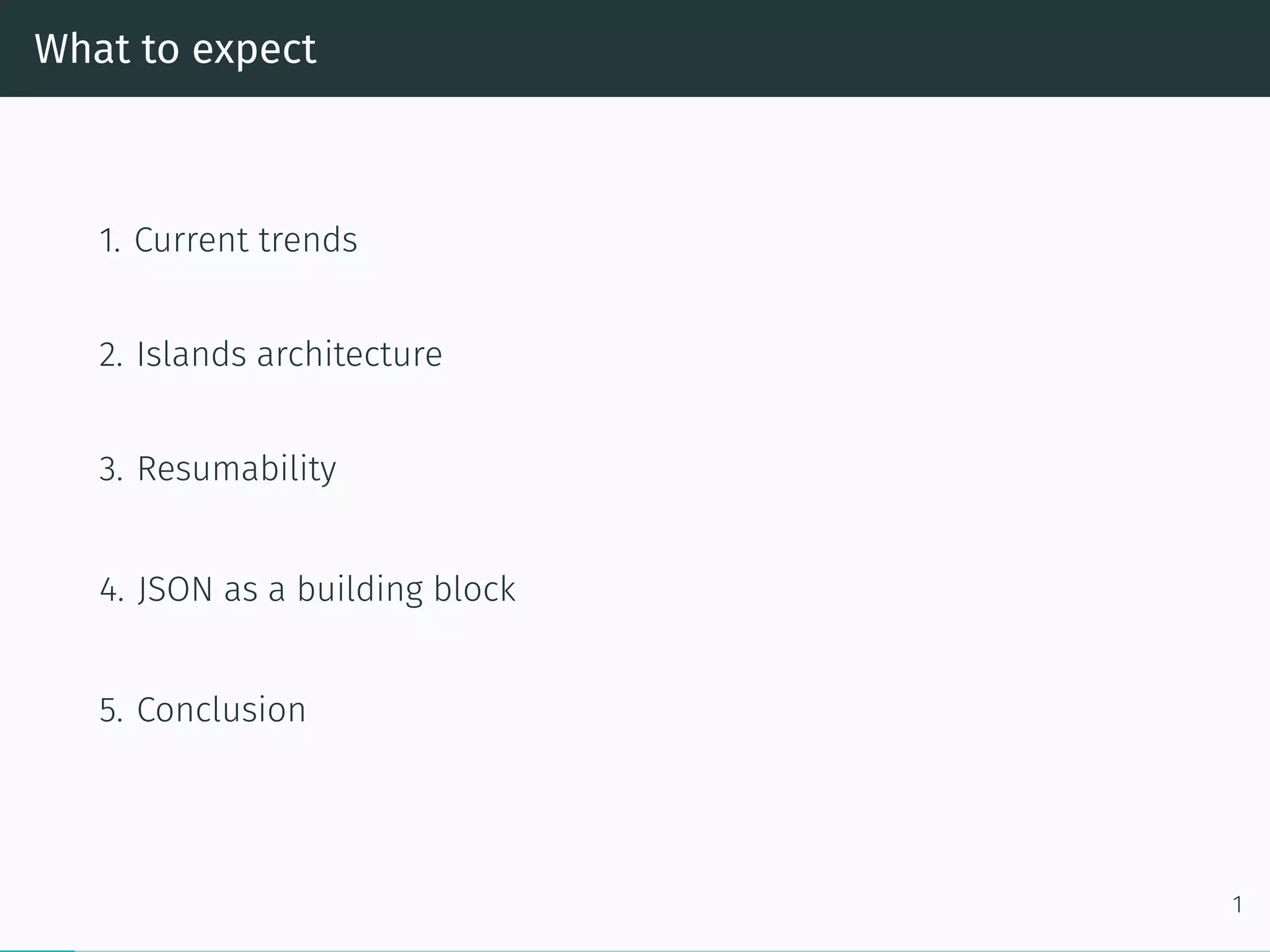

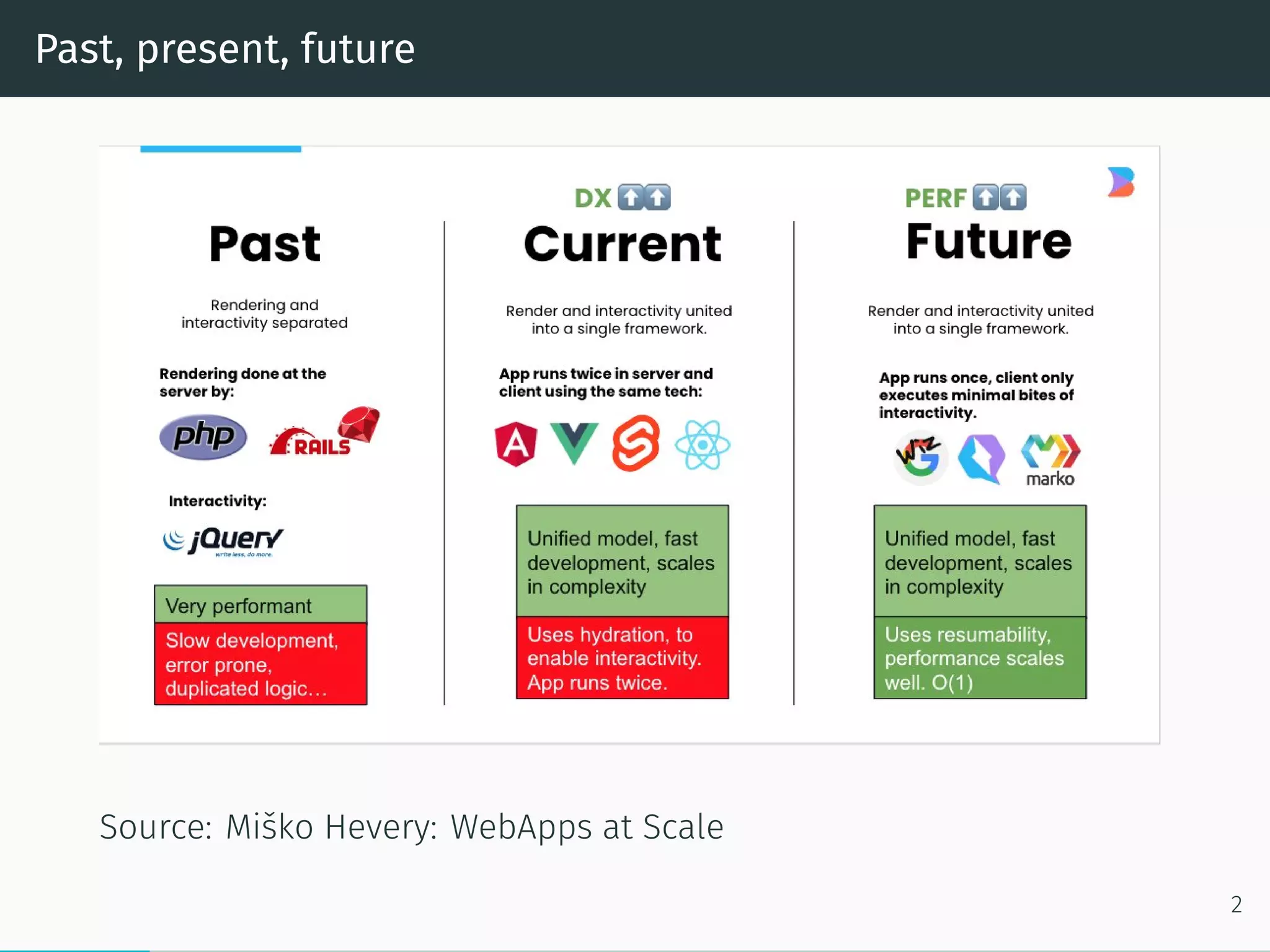
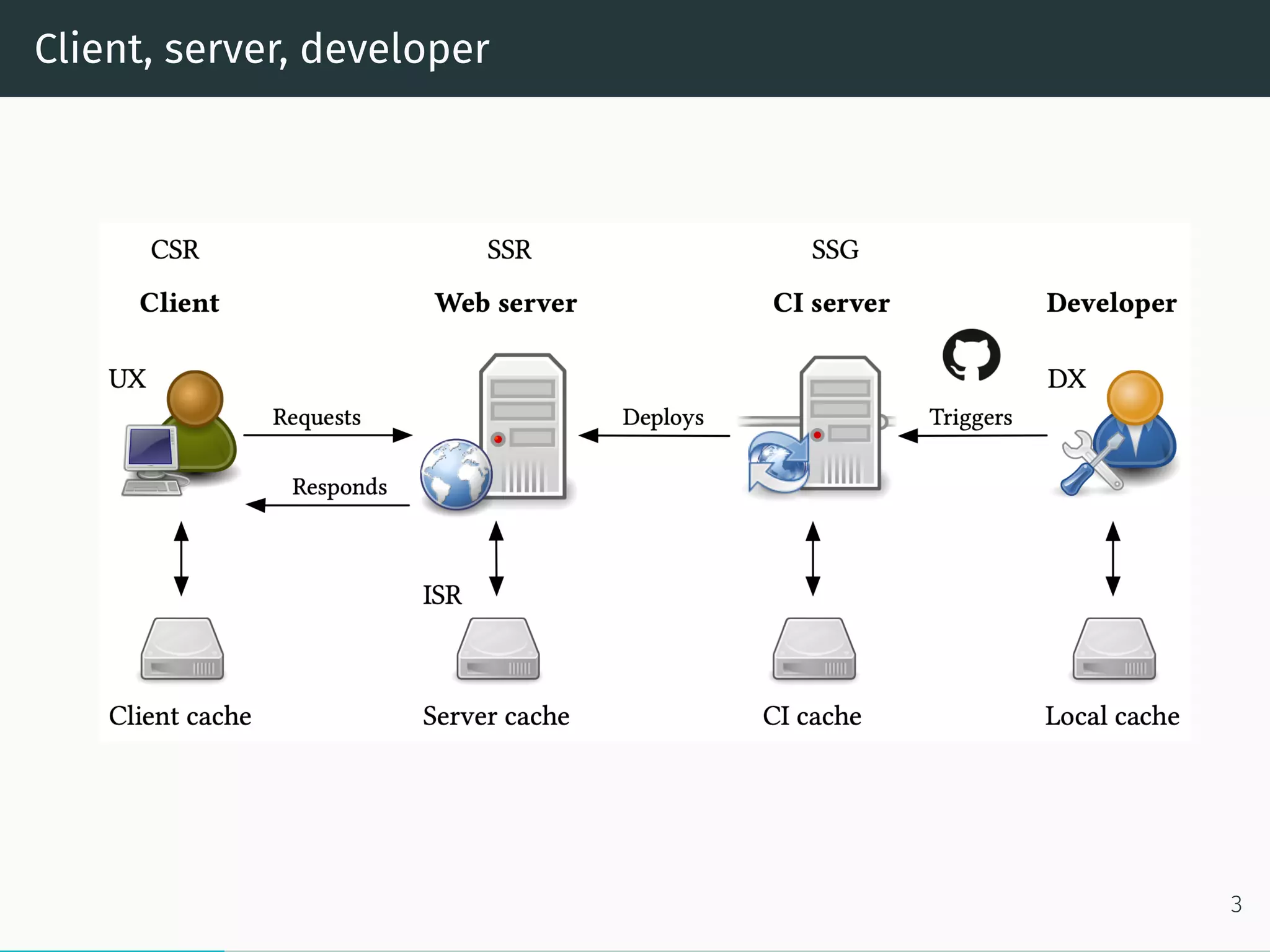
![Edge computing [6]
4](https://image.slidesharecdn.com/javascriptframeworksoftomorrow-221110131931-bb02644c/75/JavaScript-frameworks-of-tomorrow-6-2048.jpg)
![Transitional web applications (TWAs) [4]
• In October 2021, Rich Harris proposed the idea of TWAs [4]
5](https://image.slidesharecdn.com/javascriptframeworksoftomorrow-221110131931-bb02644c/75/JavaScript-frameworks-of-tomorrow-7-2048.jpg)
![Transitional web applications (TWAs) [4]
• In October 2021, Rich Harris proposed the idea of TWAs [4]
• By his definition, TWAs mix ideas from SPAs and the traditional
web
5](https://image.slidesharecdn.com/javascriptframeworksoftomorrow-221110131931-bb02644c/75/JavaScript-frameworks-of-tomorrow-8-2048.jpg)
![Transitional web applications (TWAs) [4]
• In October 2021, Rich Harris proposed the idea of TWAs [4]
• By his definition, TWAs mix ideas from SPAs and the traditional
web
• TWAs utilize SSR for fast initial loading times
5](https://image.slidesharecdn.com/javascriptframeworksoftomorrow-221110131931-bb02644c/75/JavaScript-frameworks-of-tomorrow-9-2048.jpg)
![Transitional web applications (TWAs) [4]
• In October 2021, Rich Harris proposed the idea of TWAs [4]
• By his definition, TWAs mix ideas from SPAs and the traditional
web
• TWAs utilize SSR for fast initial loading times
• TWAs are resilient as they work without JavaScript by default
5](https://image.slidesharecdn.com/javascriptframeworksoftomorrow-221110131931-bb02644c/75/JavaScript-frameworks-of-tomorrow-10-2048.jpg)
![Transitional web applications (TWAs) [4]
• In October 2021, Rich Harris proposed the idea of TWAs [4]
• By his definition, TWAs mix ideas from SPAs and the traditional
web
• TWAs utilize SSR for fast initial loading times
• TWAs are resilient as they work without JavaScript by default
• TWAs provide consistent experience and accessibility as a
built-in feature
5](https://image.slidesharecdn.com/javascriptframeworksoftomorrow-221110131931-bb02644c/75/JavaScript-frameworks-of-tomorrow-11-2048.jpg)
![Progressive enhancement in a nutshell (2008) [3]
6](https://image.slidesharecdn.com/javascriptframeworksoftomorrow-221110131931-bb02644c/75/JavaScript-frameworks-of-tomorrow-12-2048.jpg)
![Disappearing frameworks [2]
• According to Ryan Carniato [2], disappearing frameworks come
with almost a zero cost and disappear from an application
7](https://image.slidesharecdn.com/javascriptframeworksoftomorrow-221110131931-bb02644c/75/JavaScript-frameworks-of-tomorrow-13-2048.jpg)
![Disappearing frameworks [2]
• According to Ryan Carniato [2], disappearing frameworks come
with almost a zero cost and disappear from an application
• The starting point forms a contrast to the current breed of
frameworks that load upfront and rely on expensive hydration
for SSR
7](https://image.slidesharecdn.com/javascriptframeworksoftomorrow-221110131931-bb02644c/75/JavaScript-frameworks-of-tomorrow-14-2048.jpg)
![Disappearing frameworks [2]
• According to Ryan Carniato [2], disappearing frameworks come
with almost a zero cost and disappear from an application
• The starting point forms a contrast to the current breed of
frameworks that load upfront and rely on expensive hydration
for SSR
• Changing the fundamental viewpoint allows for new
architectures to emerge and it’s consistent with the idea of TWAs
7](https://image.slidesharecdn.com/javascriptframeworksoftomorrow-221110131931-bb02644c/75/JavaScript-frameworks-of-tomorrow-15-2048.jpg)
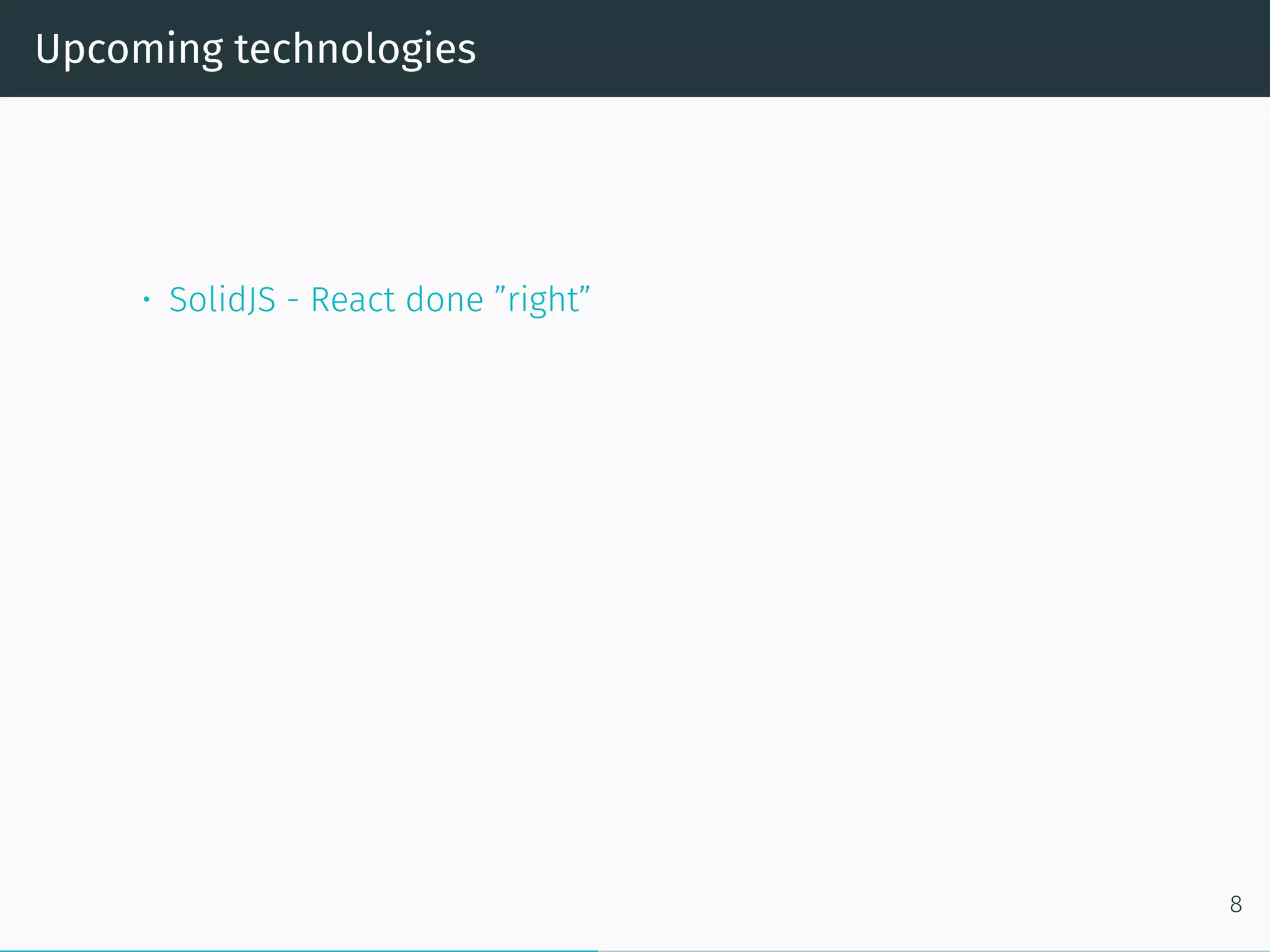
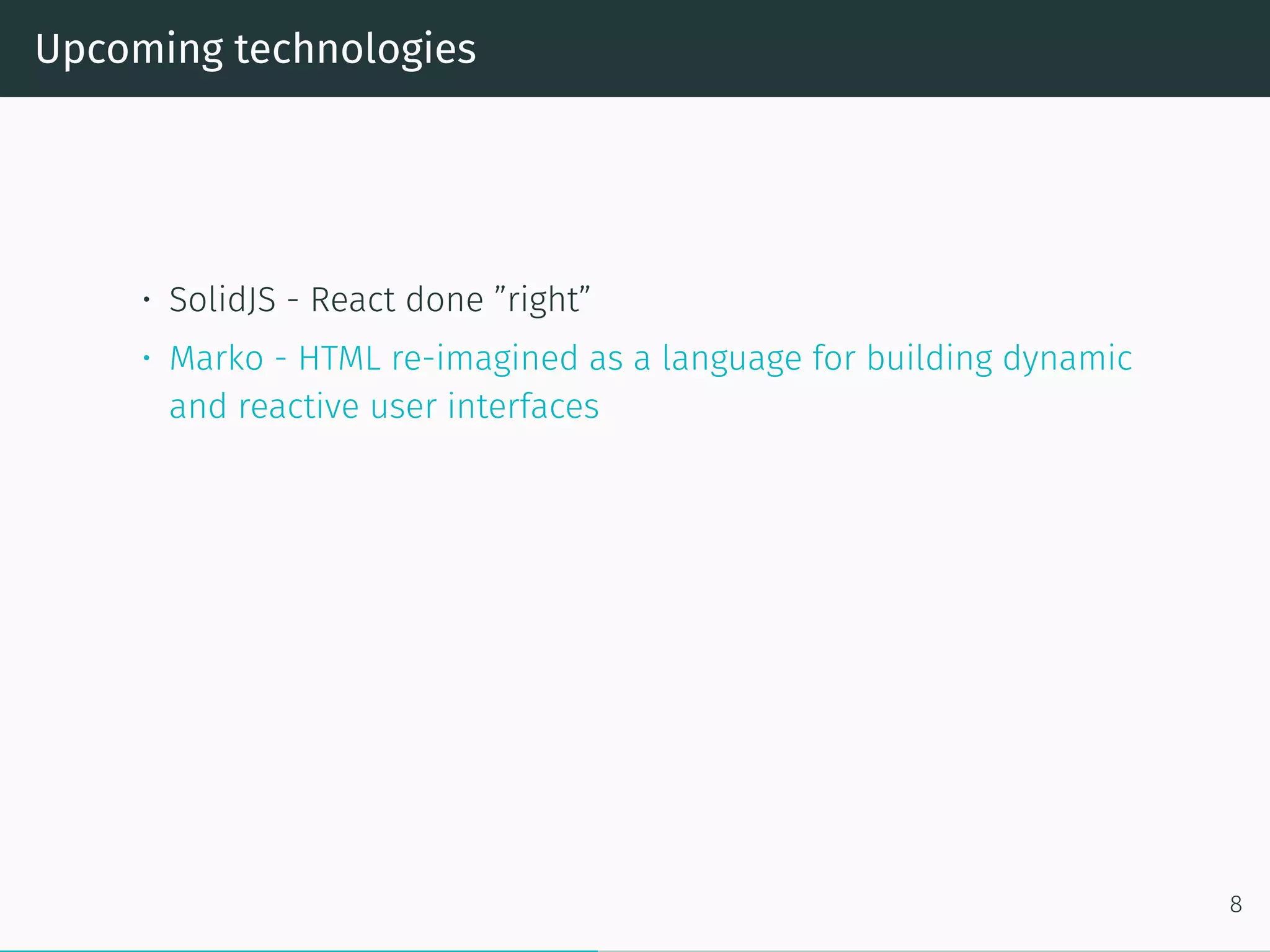
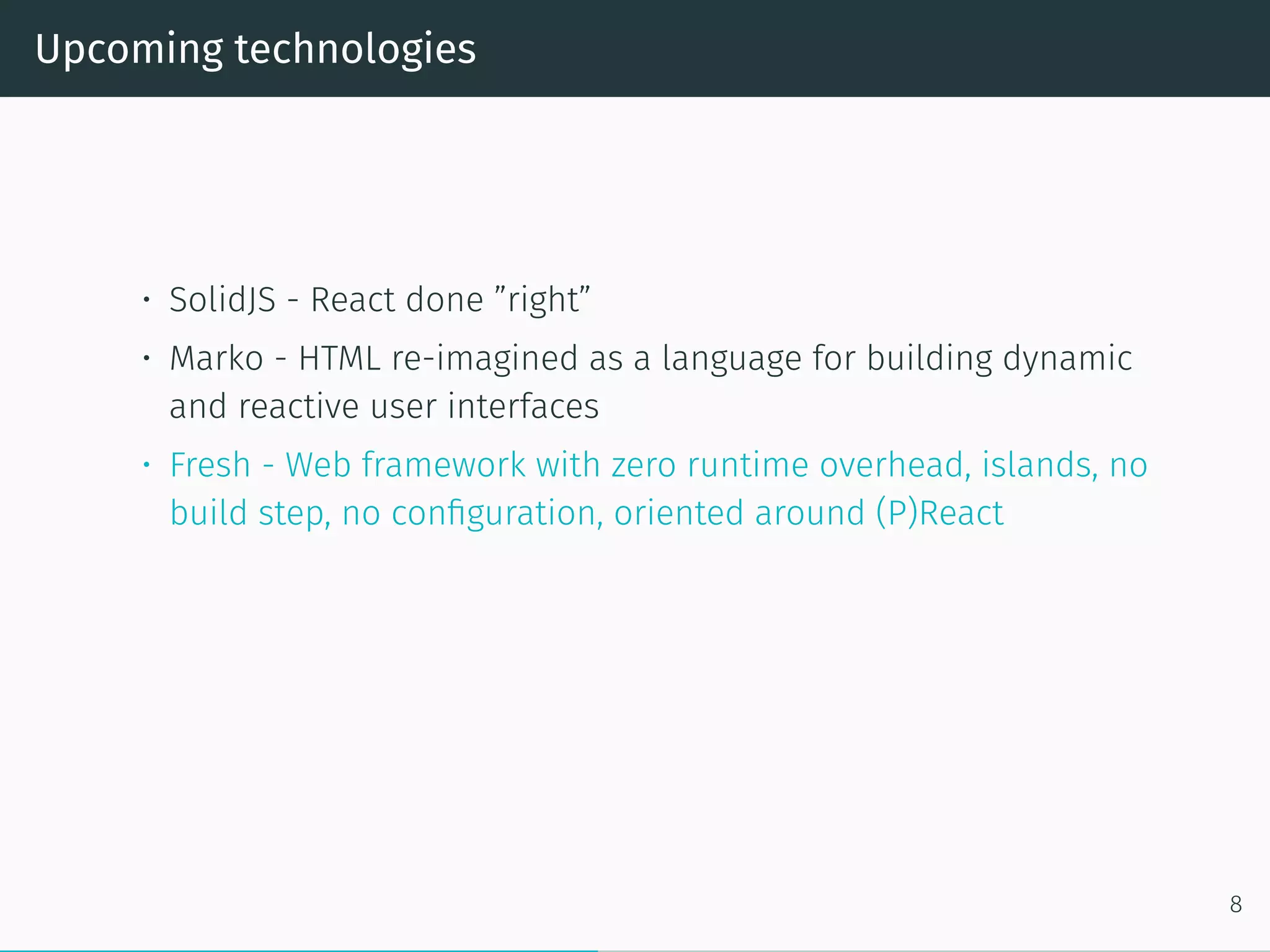
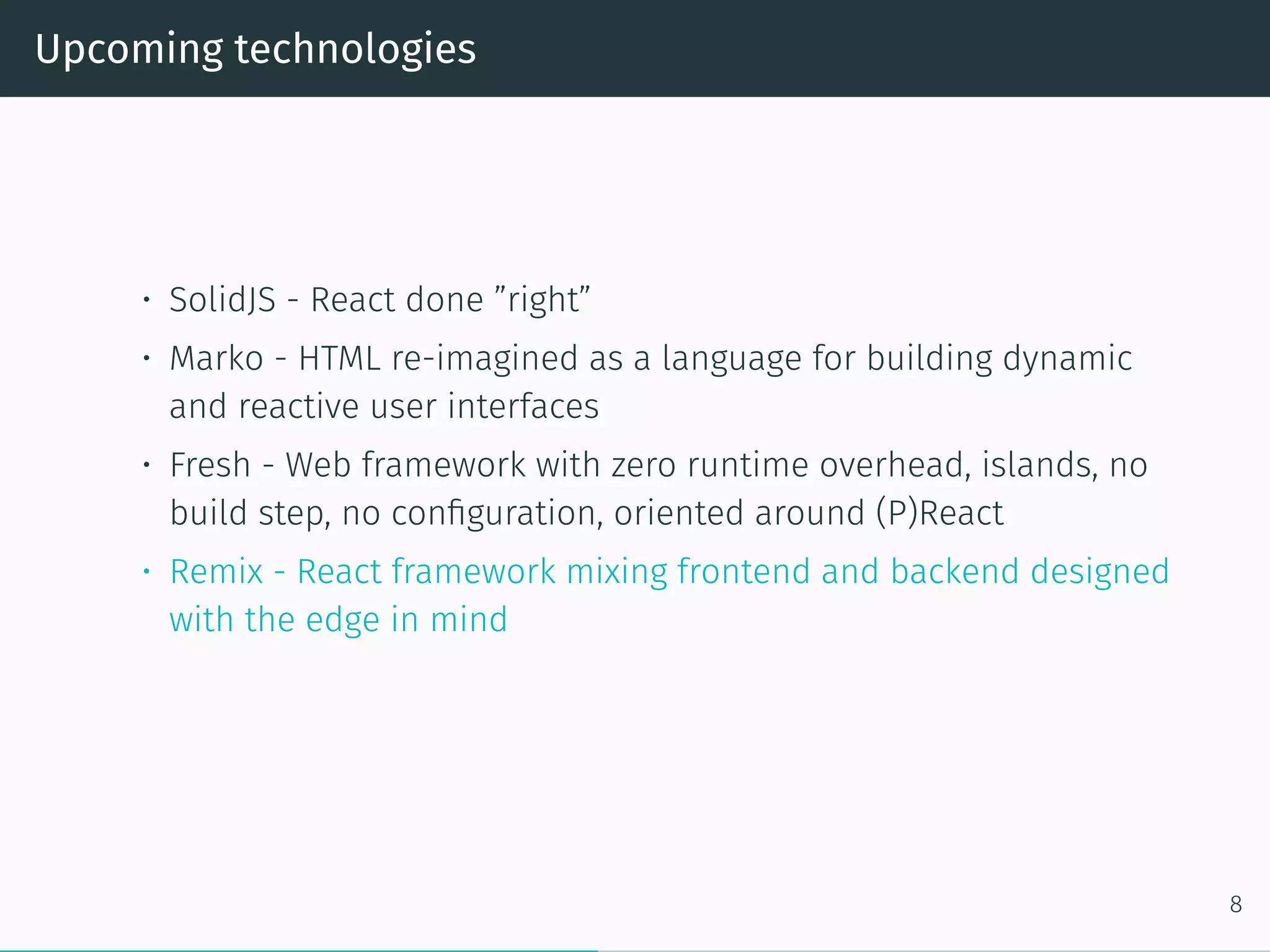
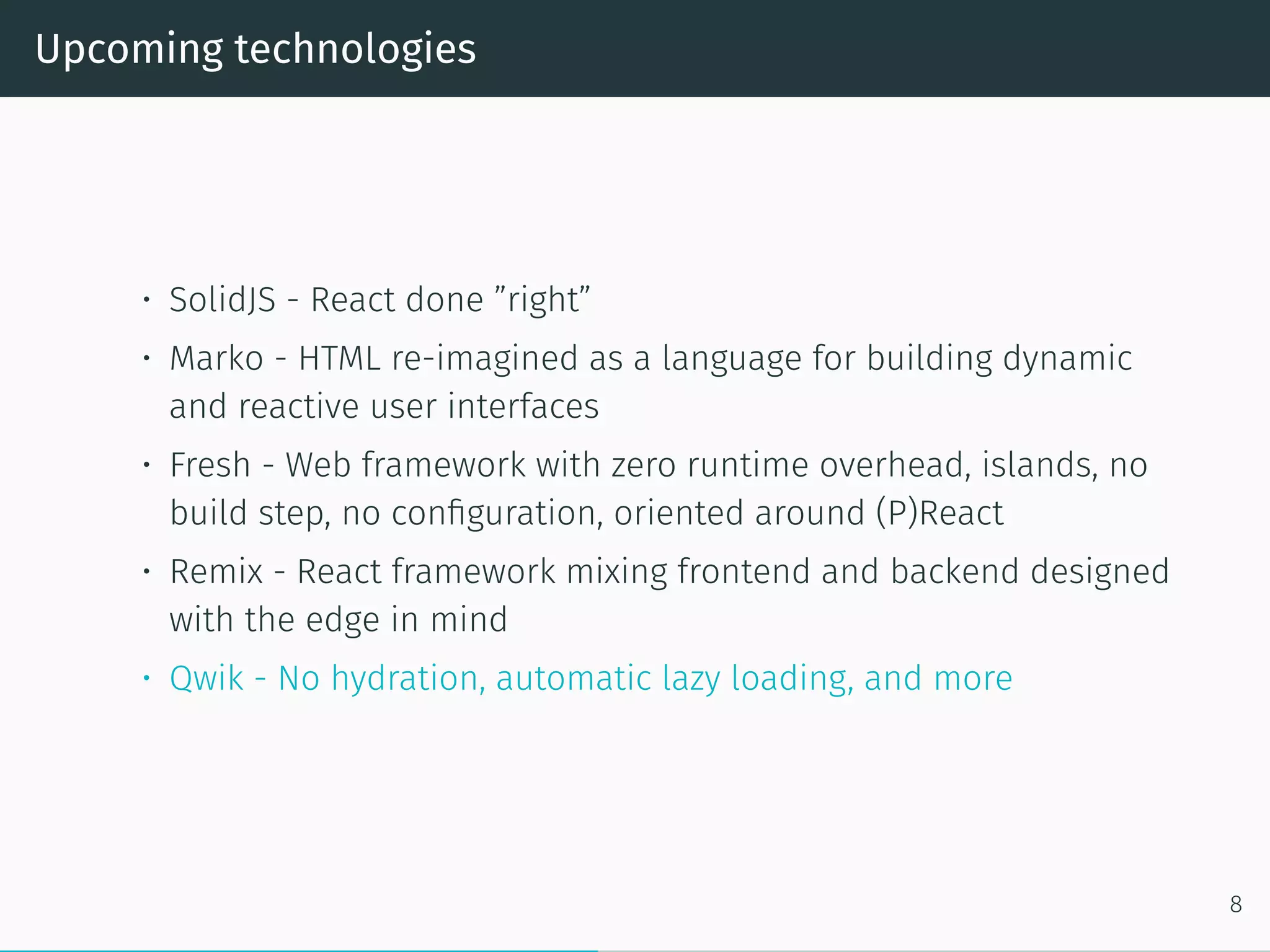
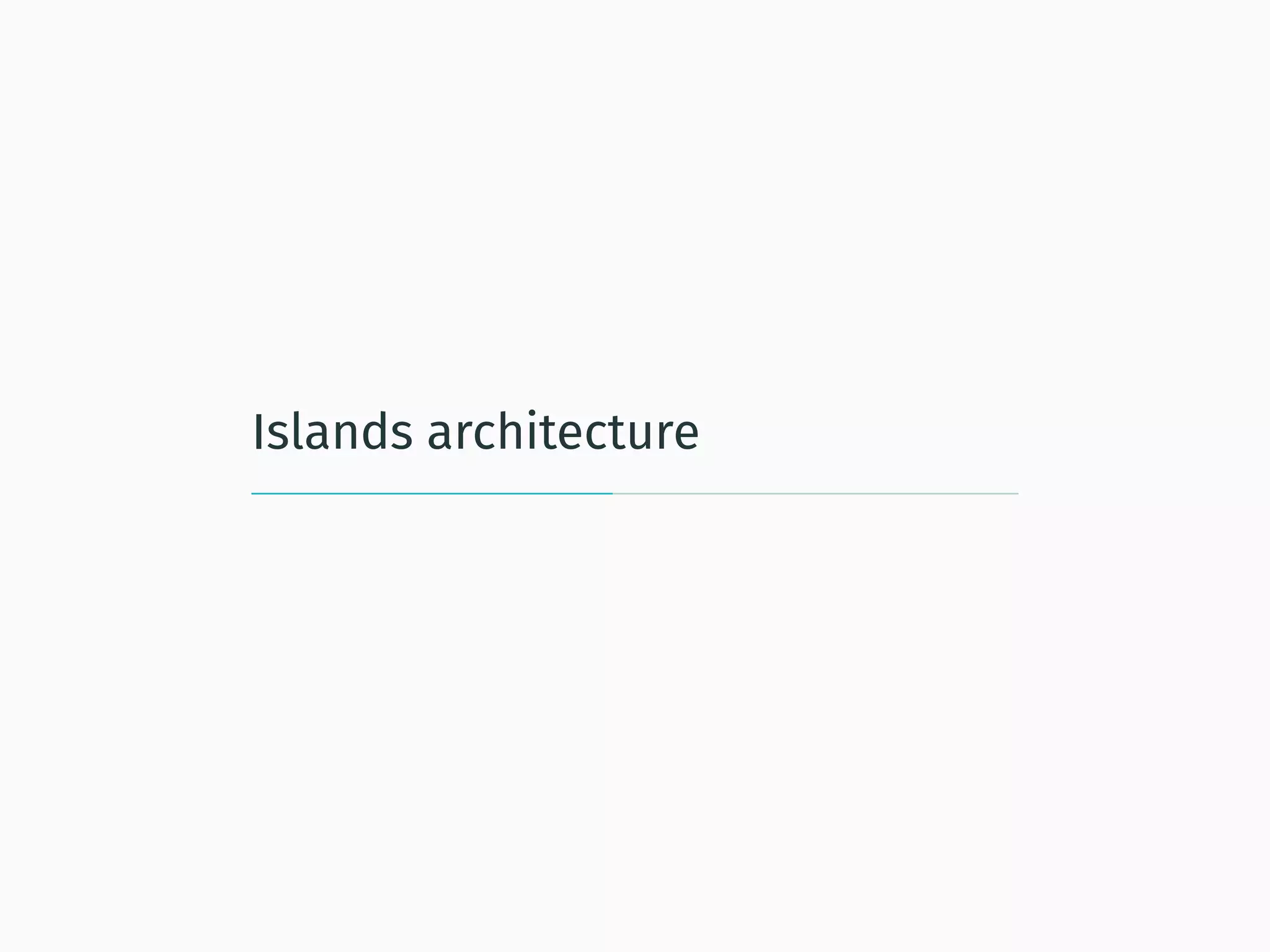
![Islands architecture [5]
9](https://image.slidesharecdn.com/javascriptframeworksoftomorrow-221110131931-bb02644c/75/JavaScript-frameworks-of-tomorrow-22-2048.jpg)
![Islands architecture implemented by Etsy [1]
10](https://image.slidesharecdn.com/javascriptframeworksoftomorrow-221110131931-bb02644c/75/JavaScript-frameworks-of-tomorrow-23-2048.jpg)
![Islands architecture compared [7]
11](https://image.slidesharecdn.com/javascriptframeworksoftomorrow-221110131931-bb02644c/75/JavaScript-frameworks-of-tomorrow-24-2048.jpg)
